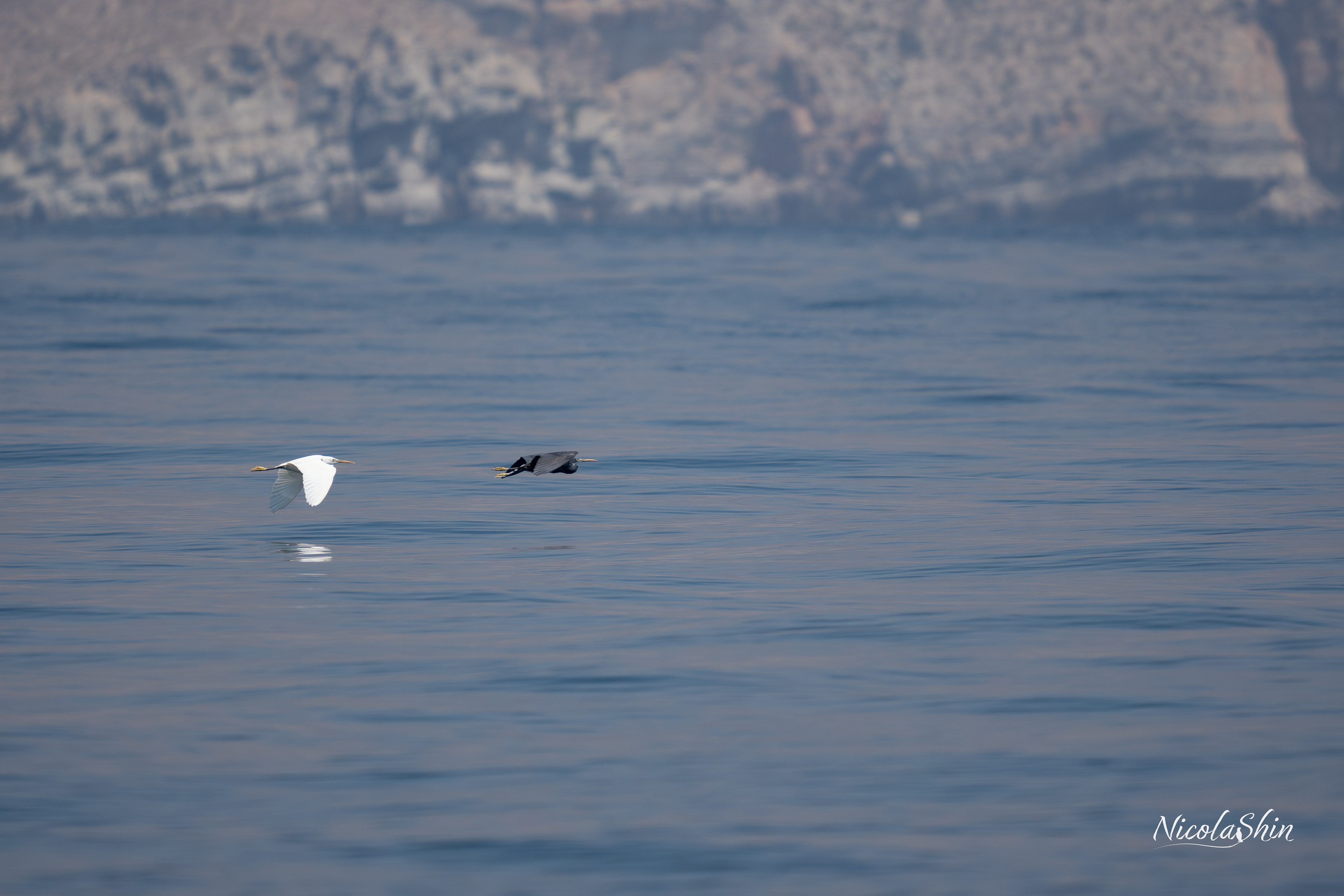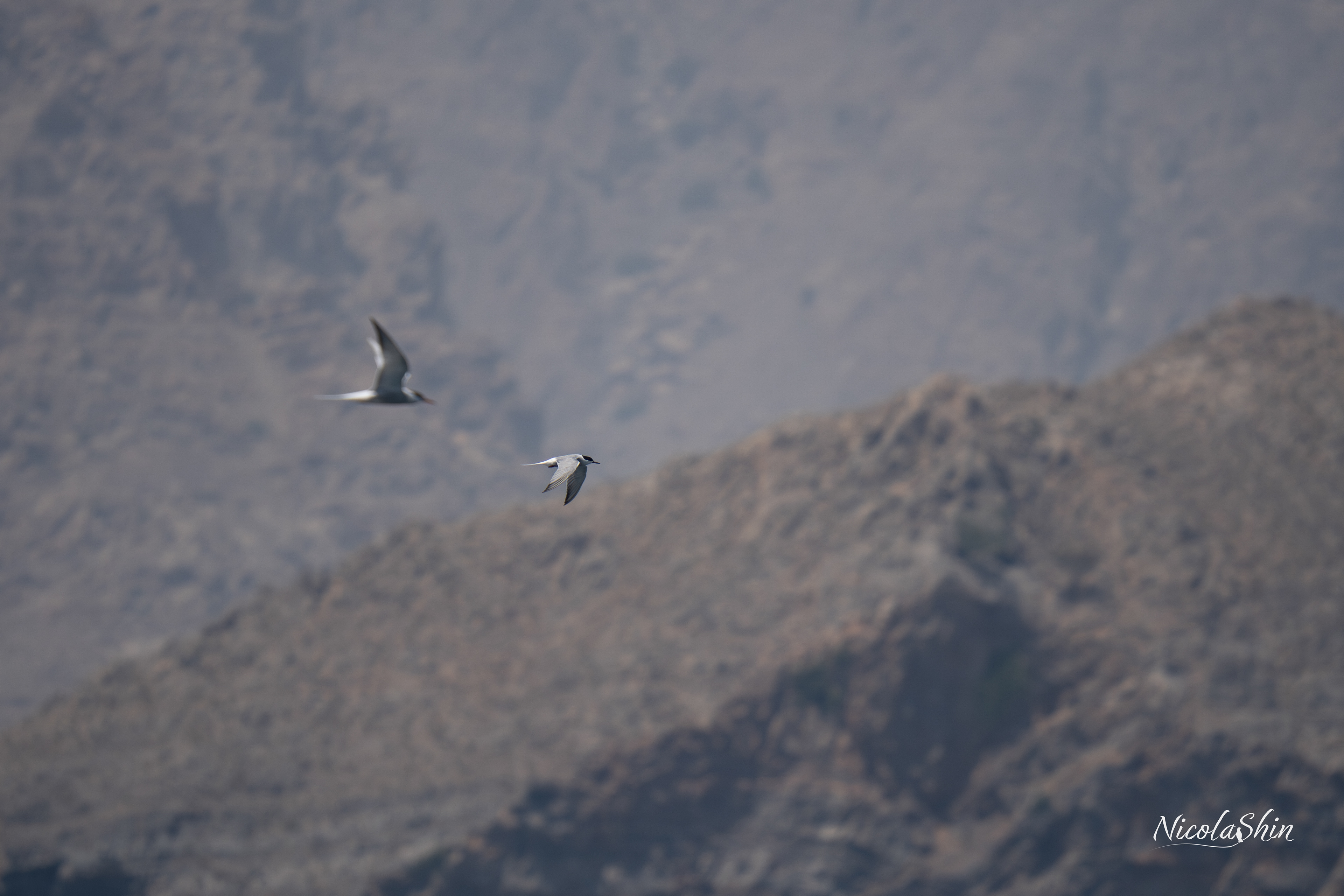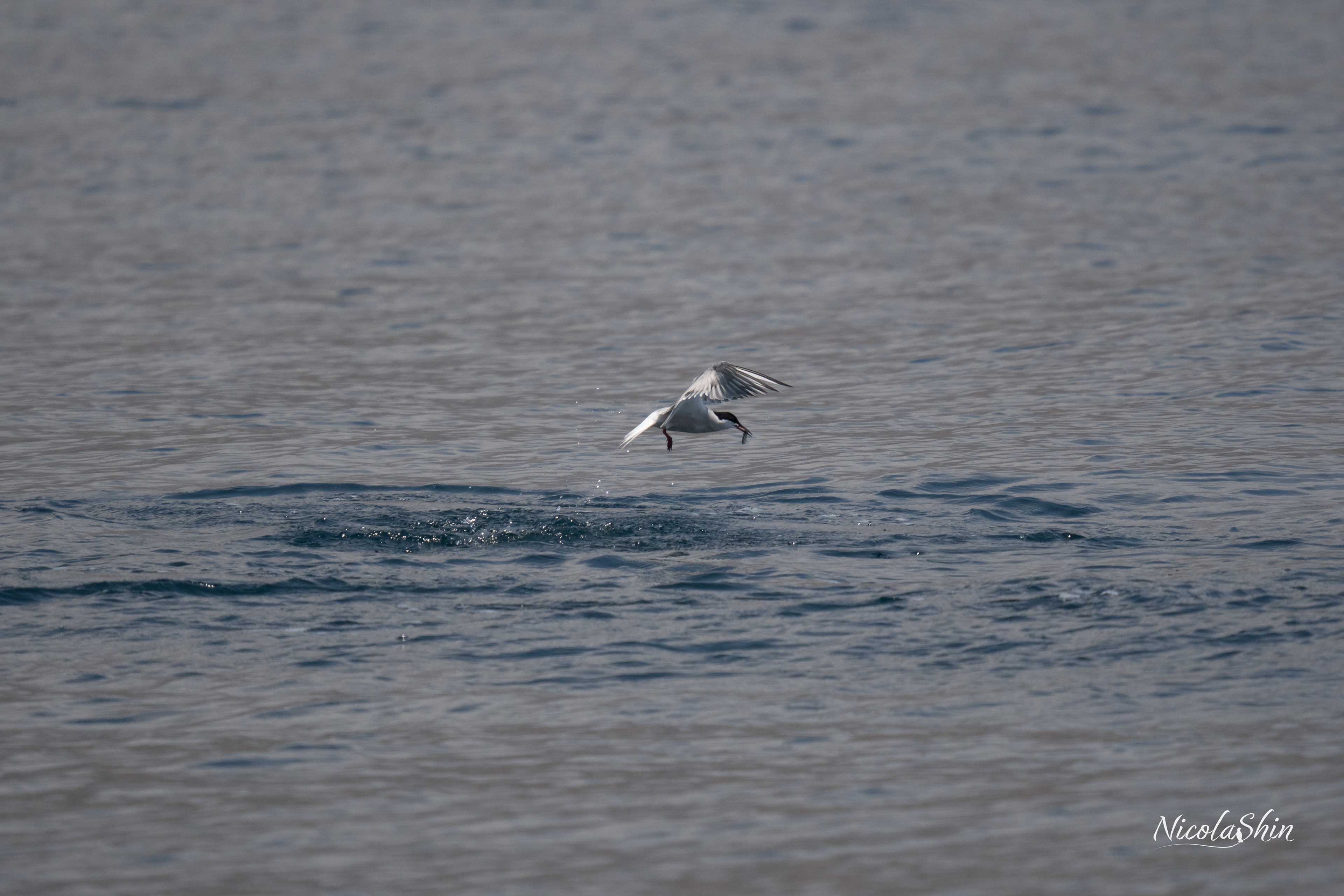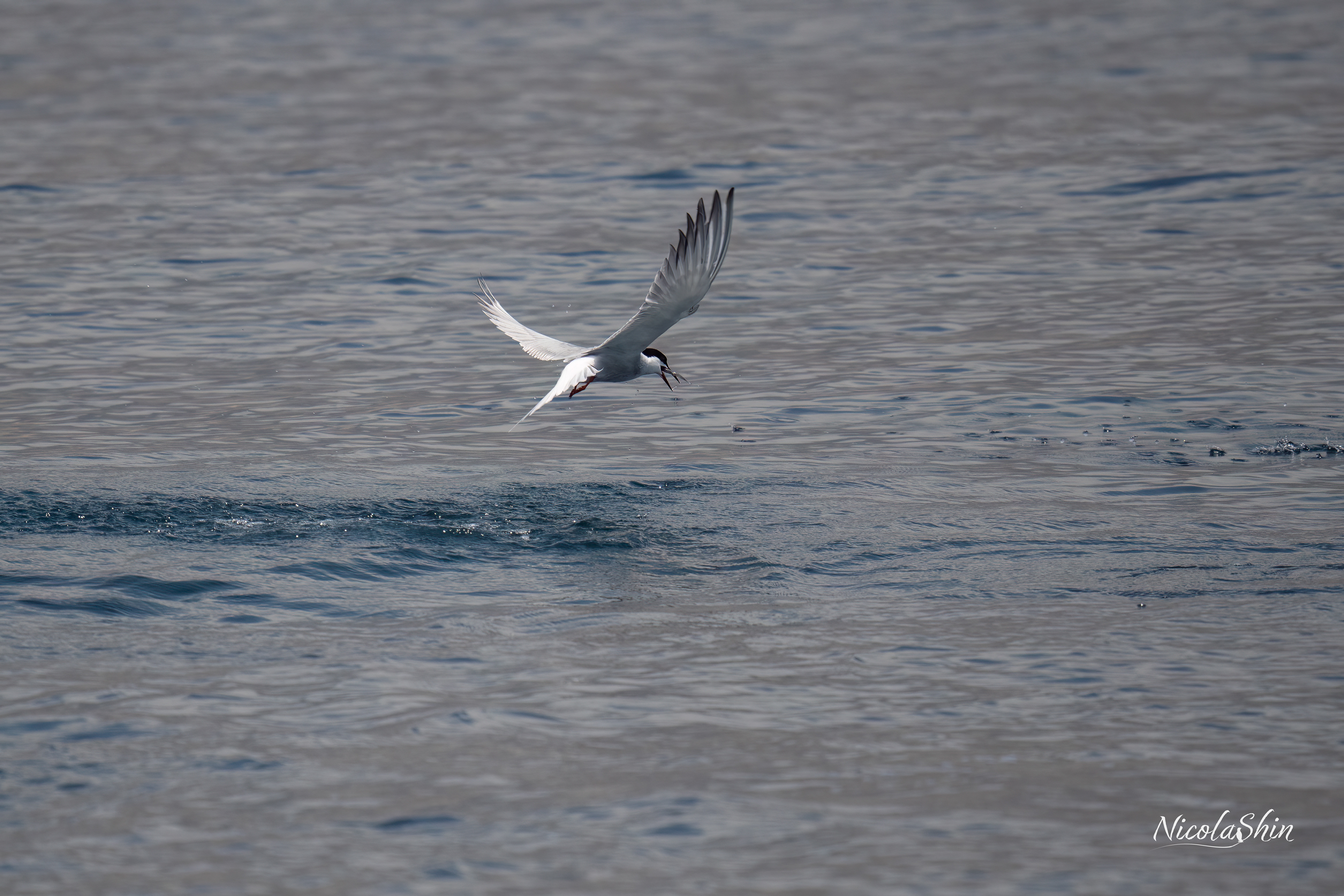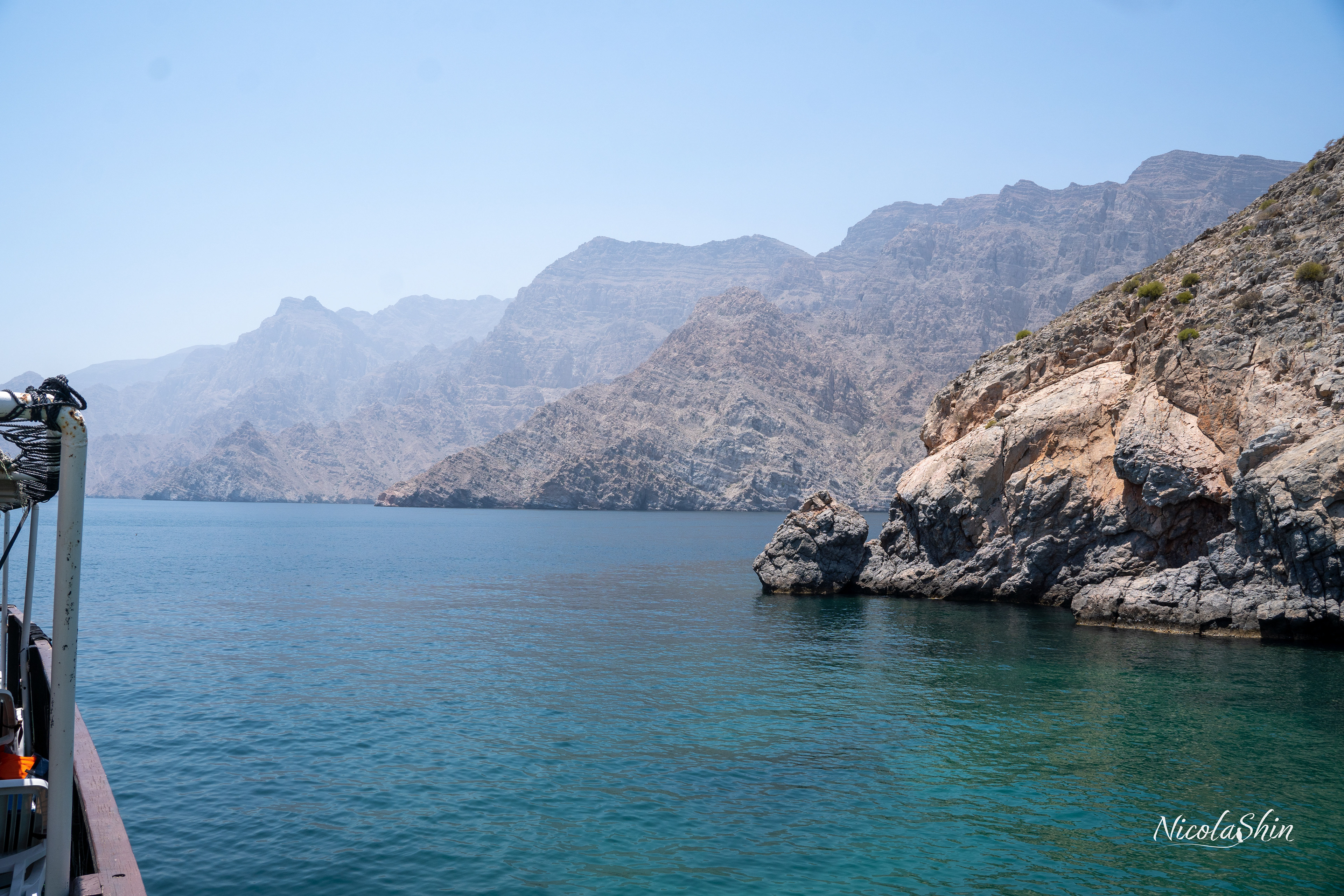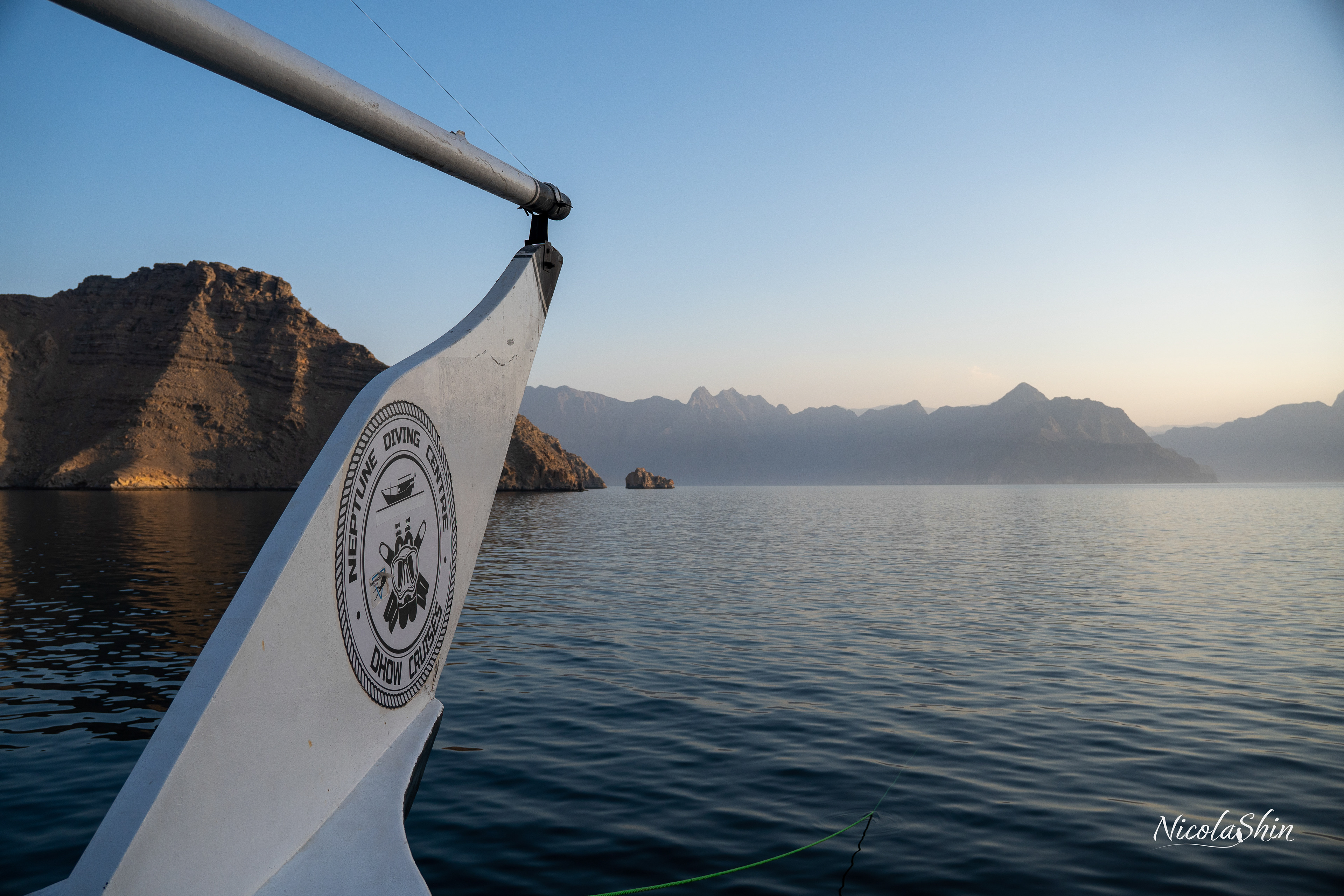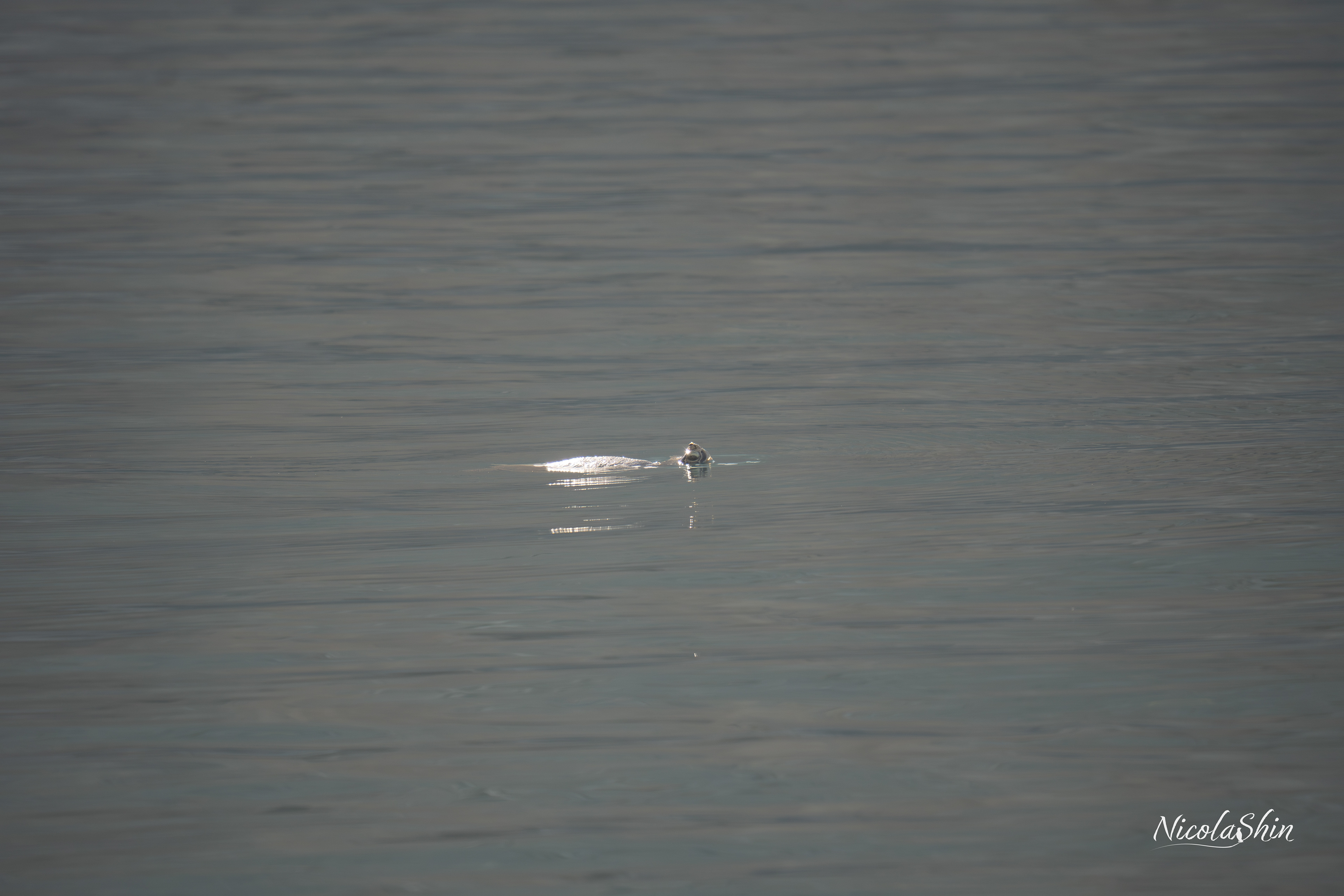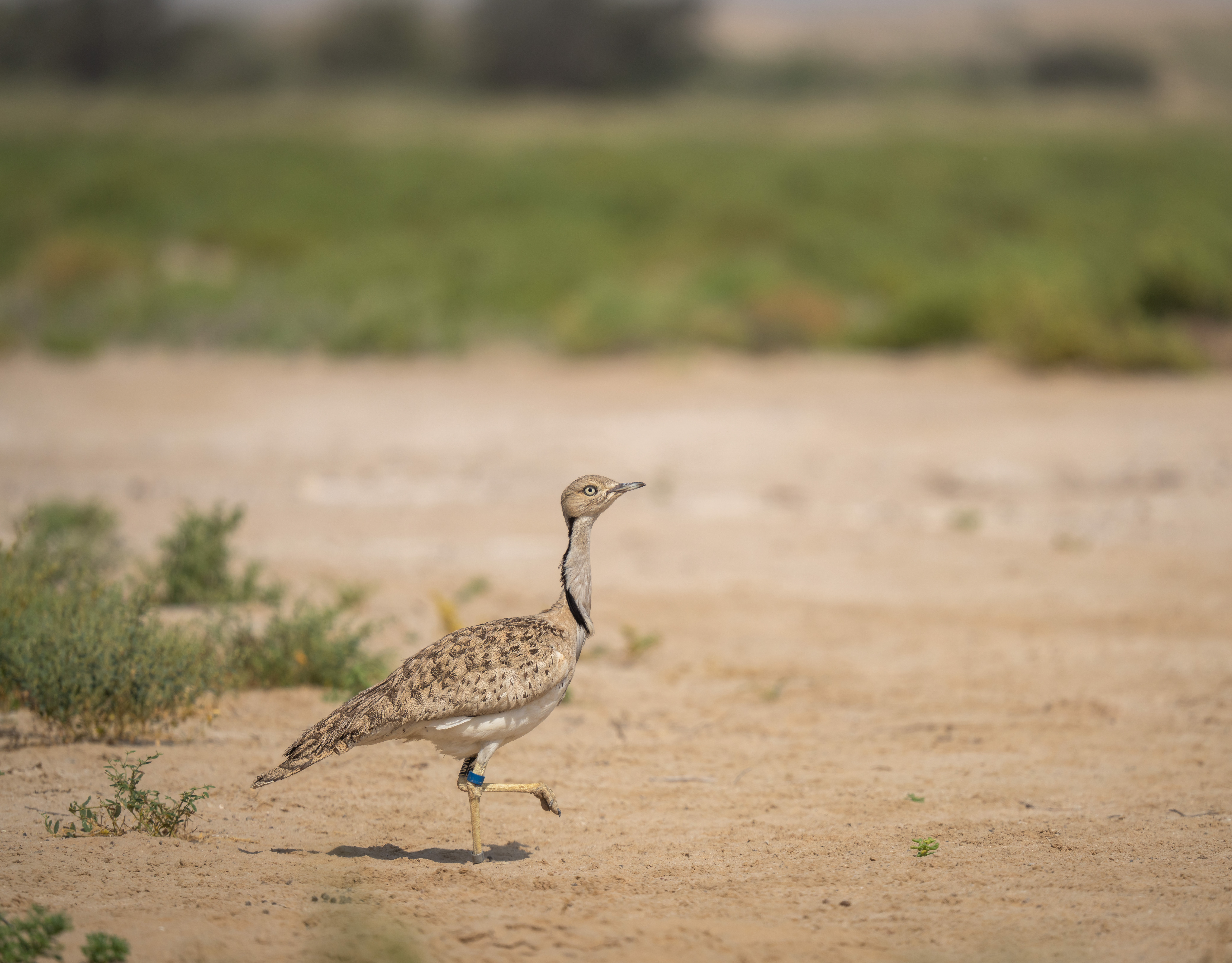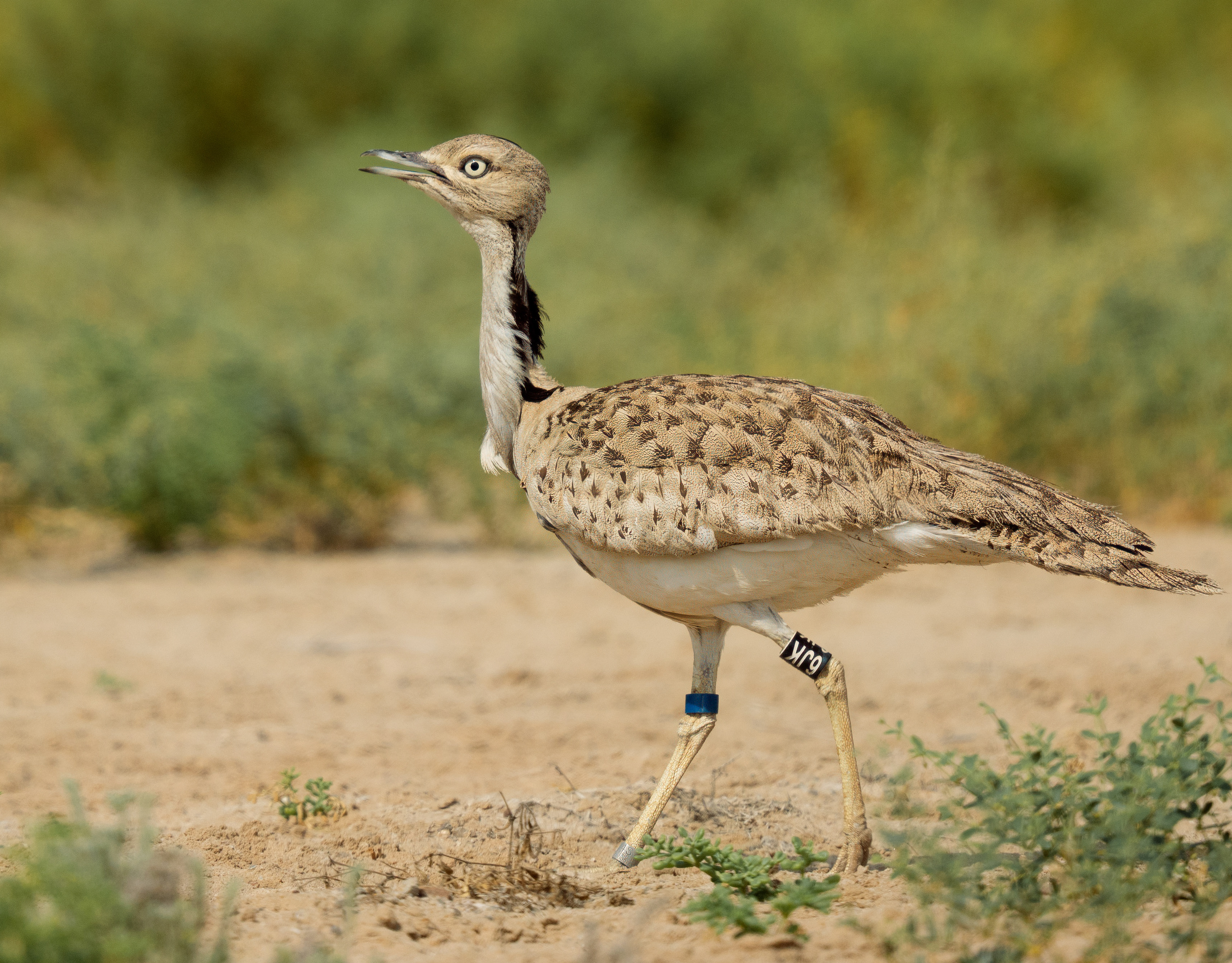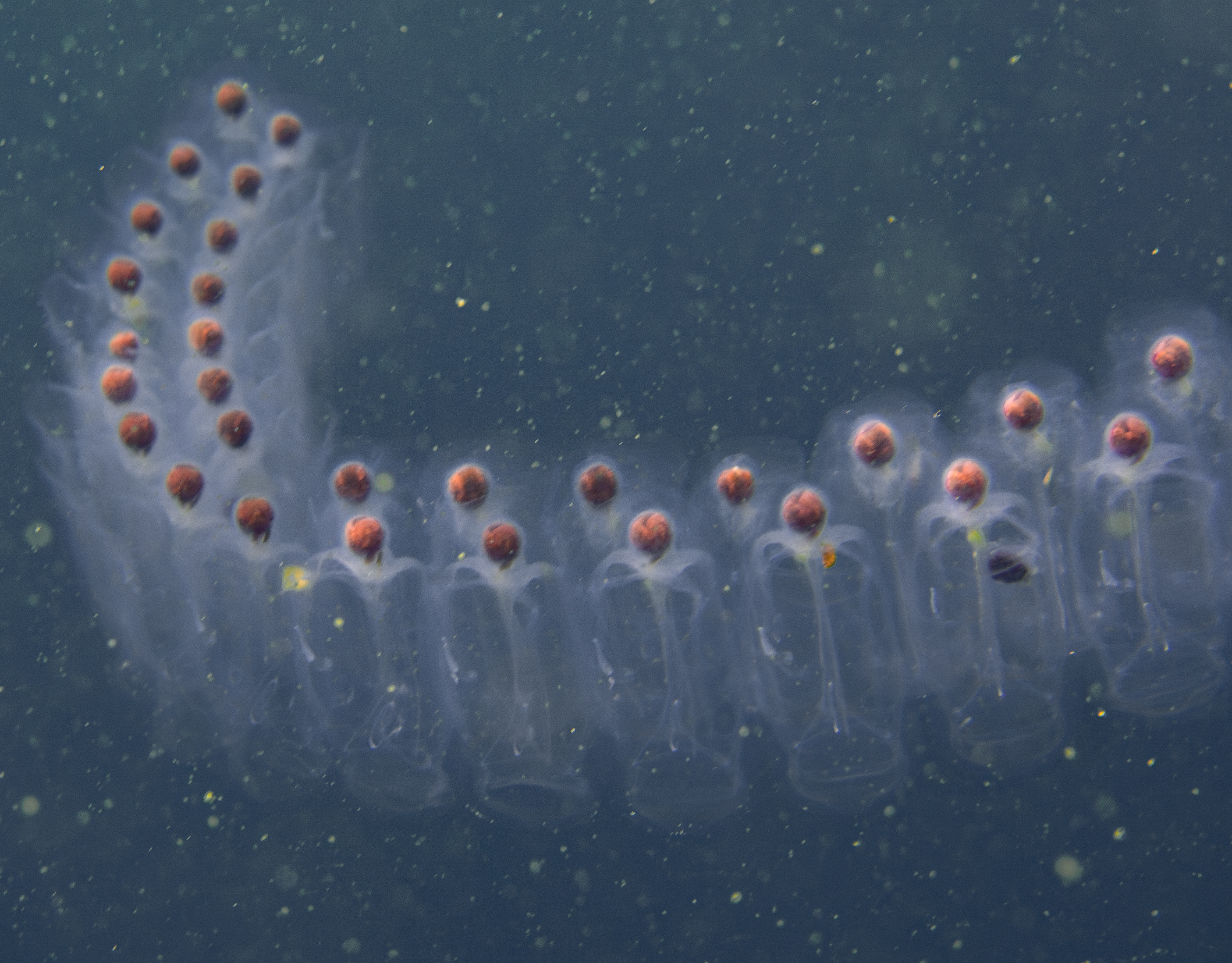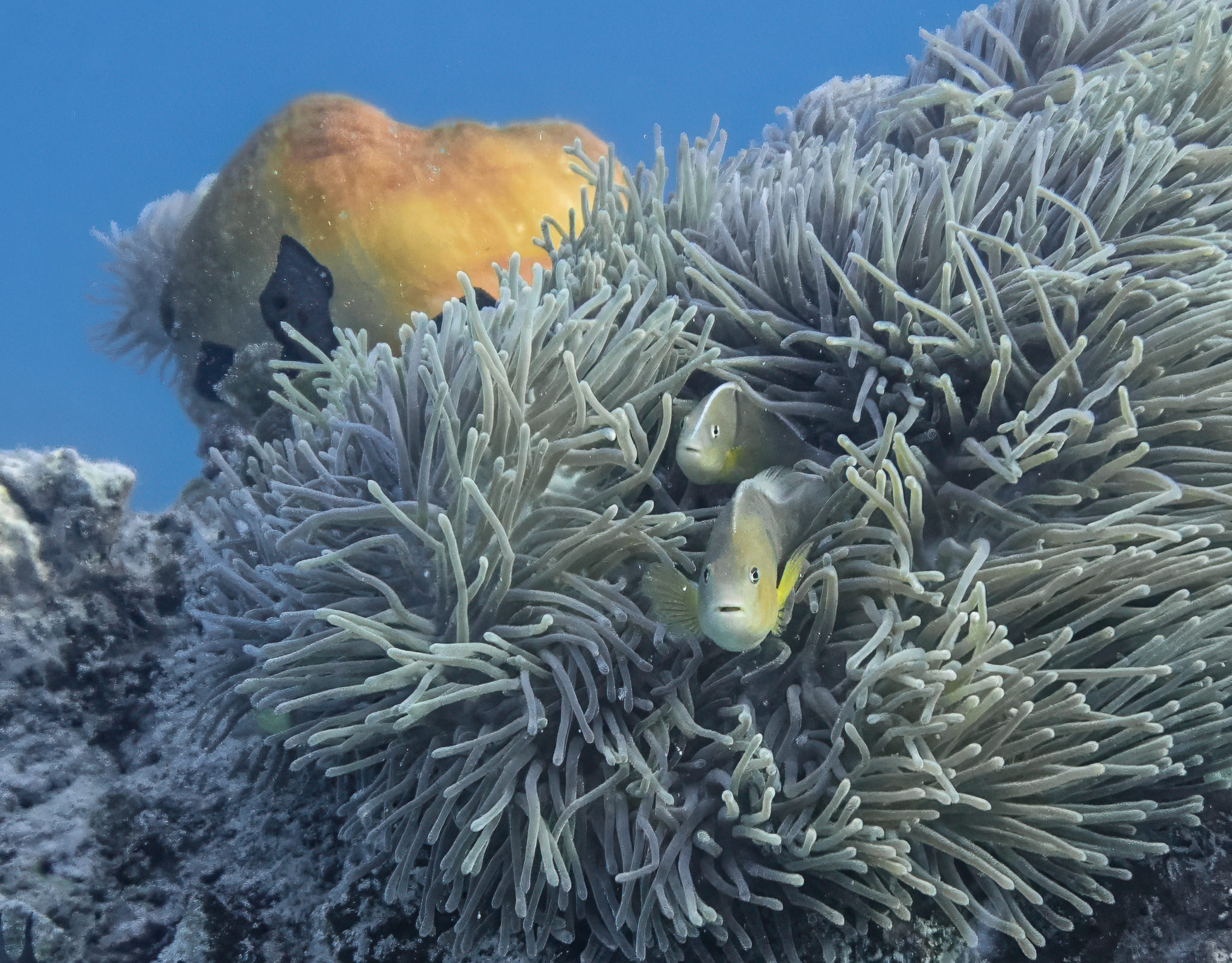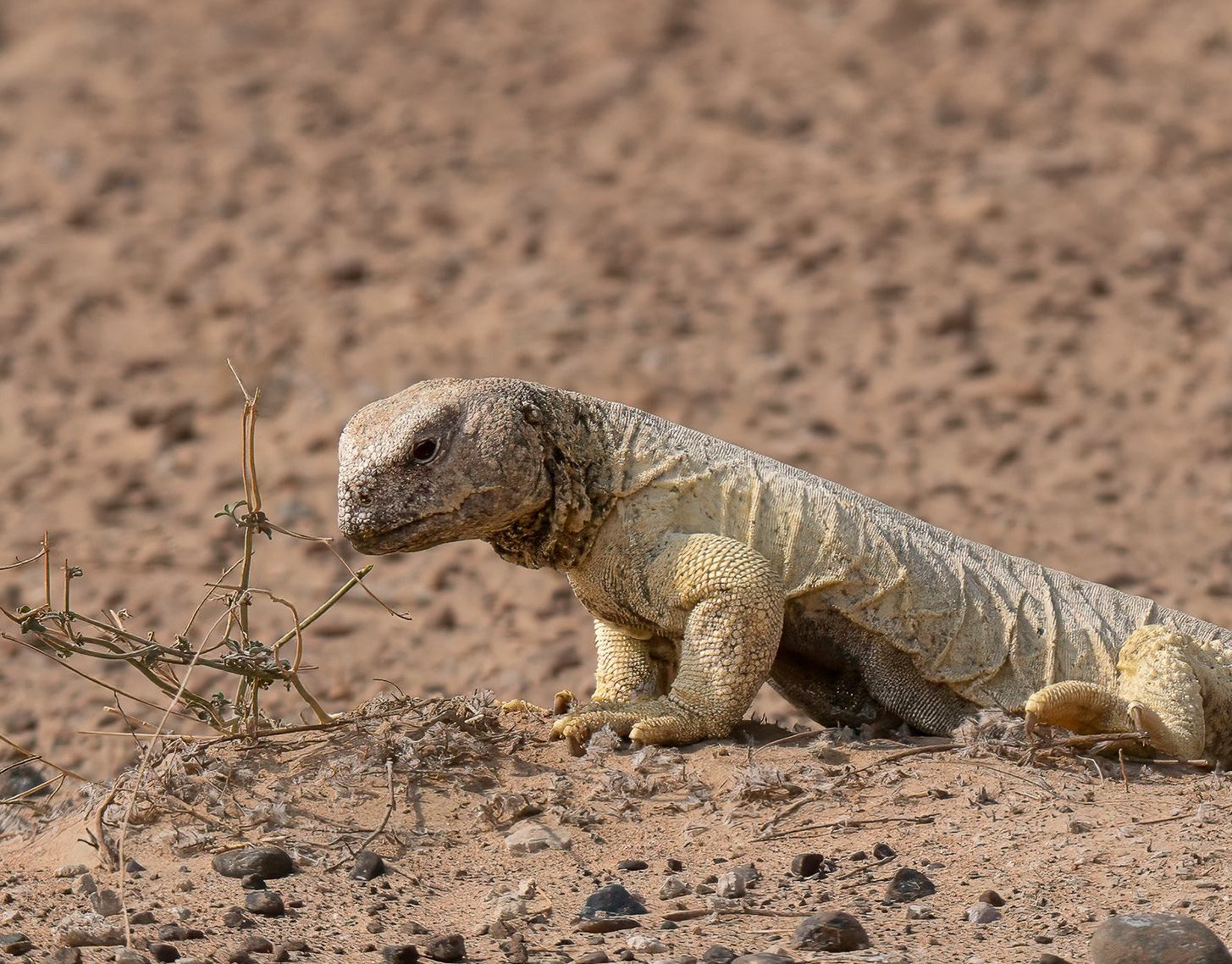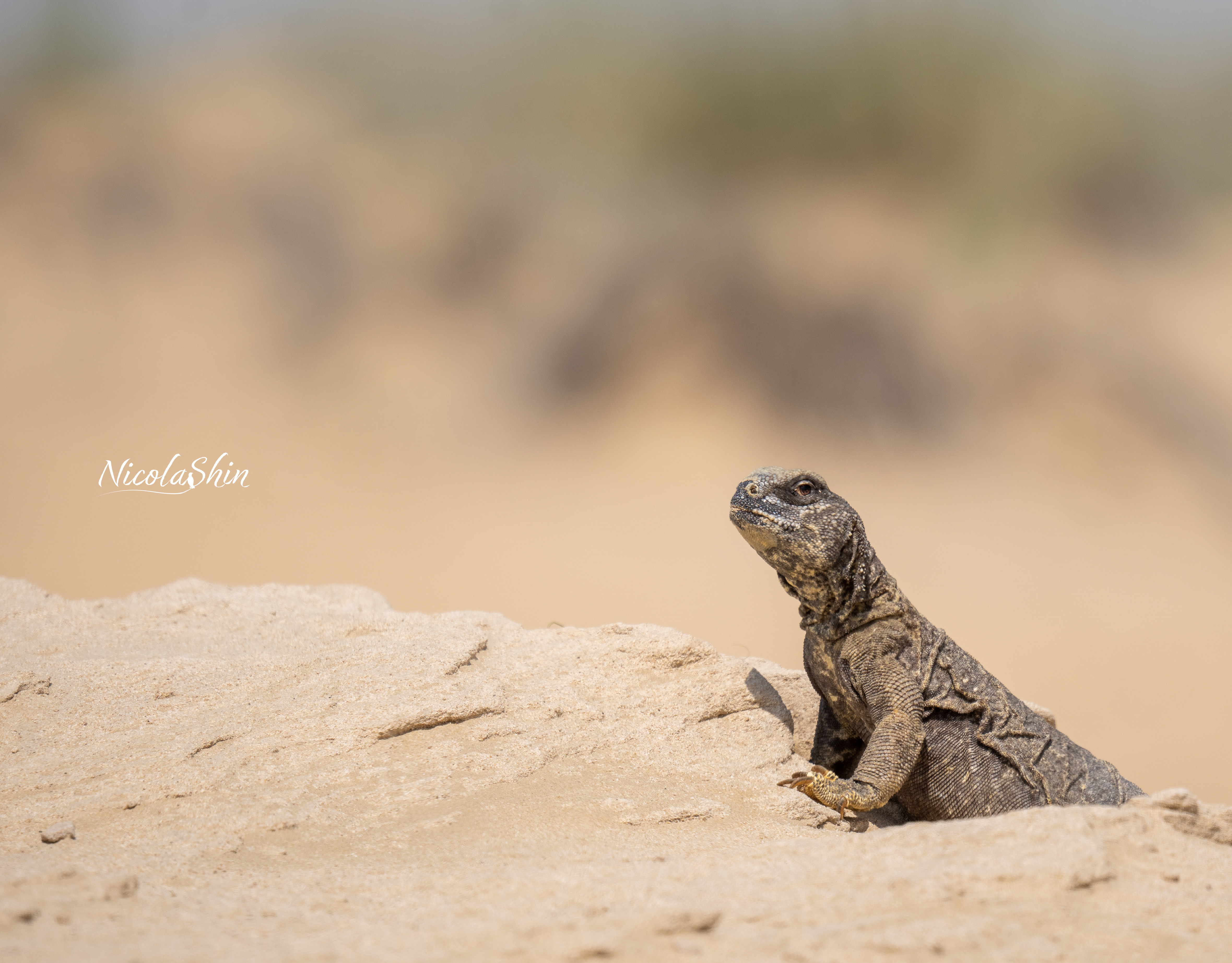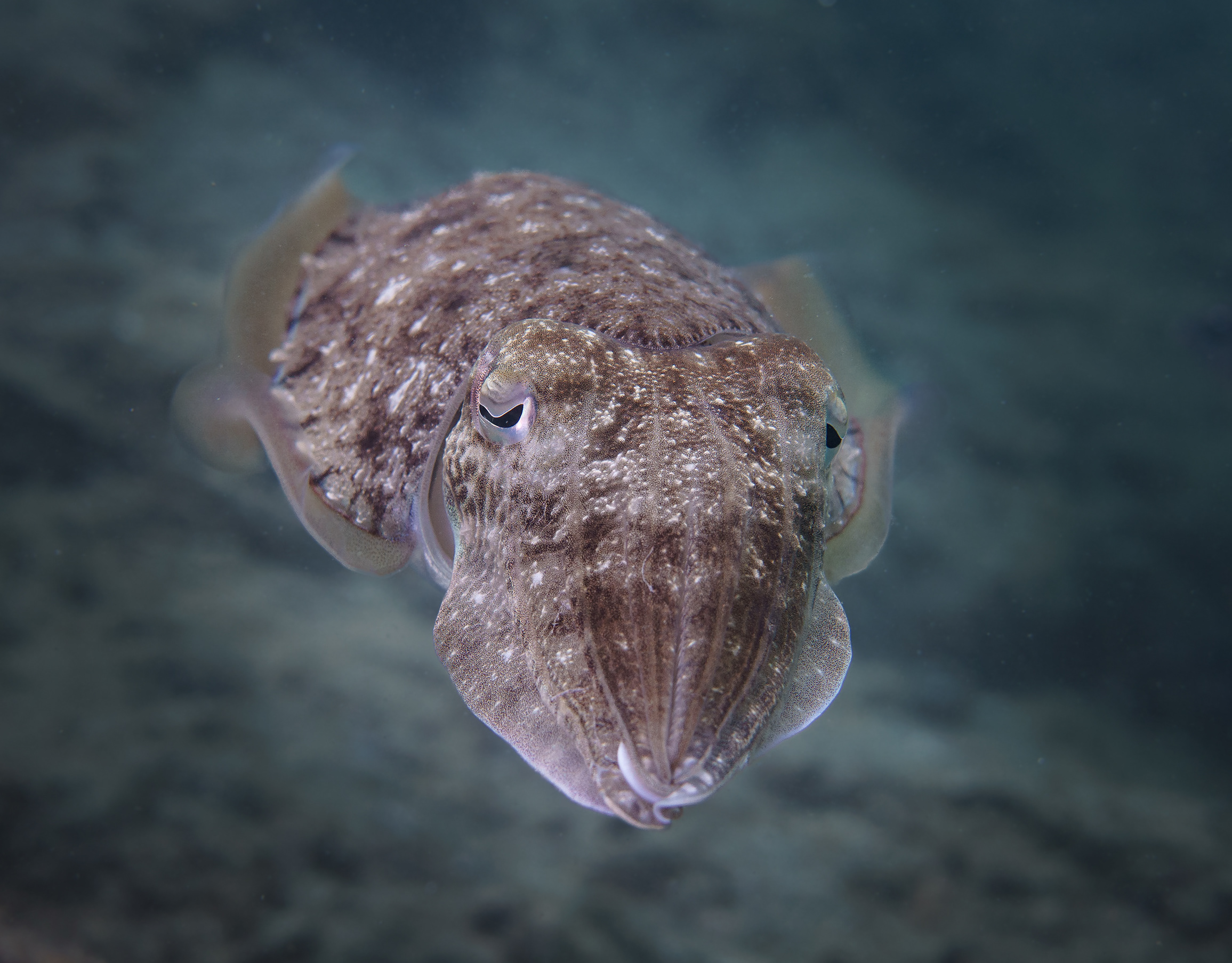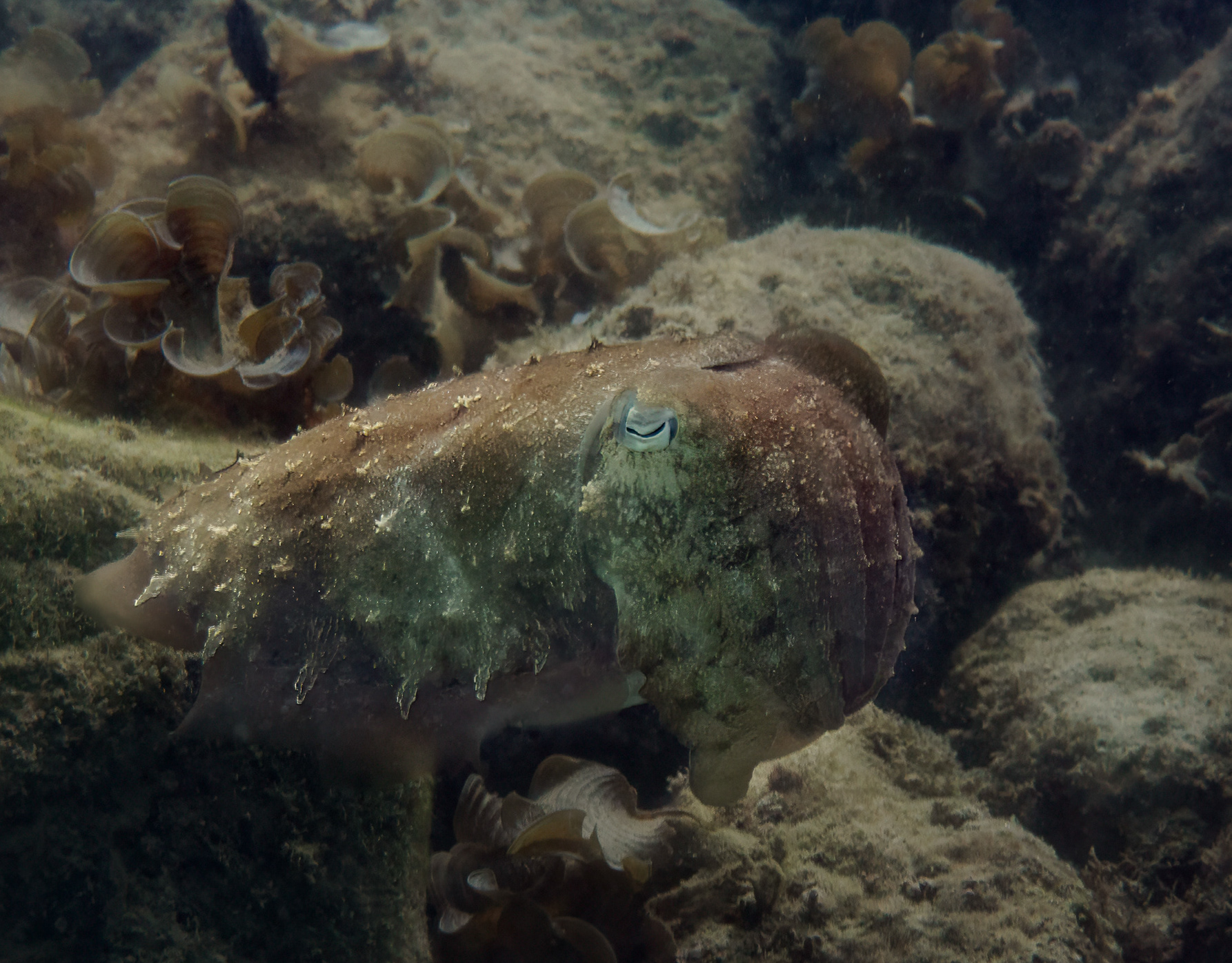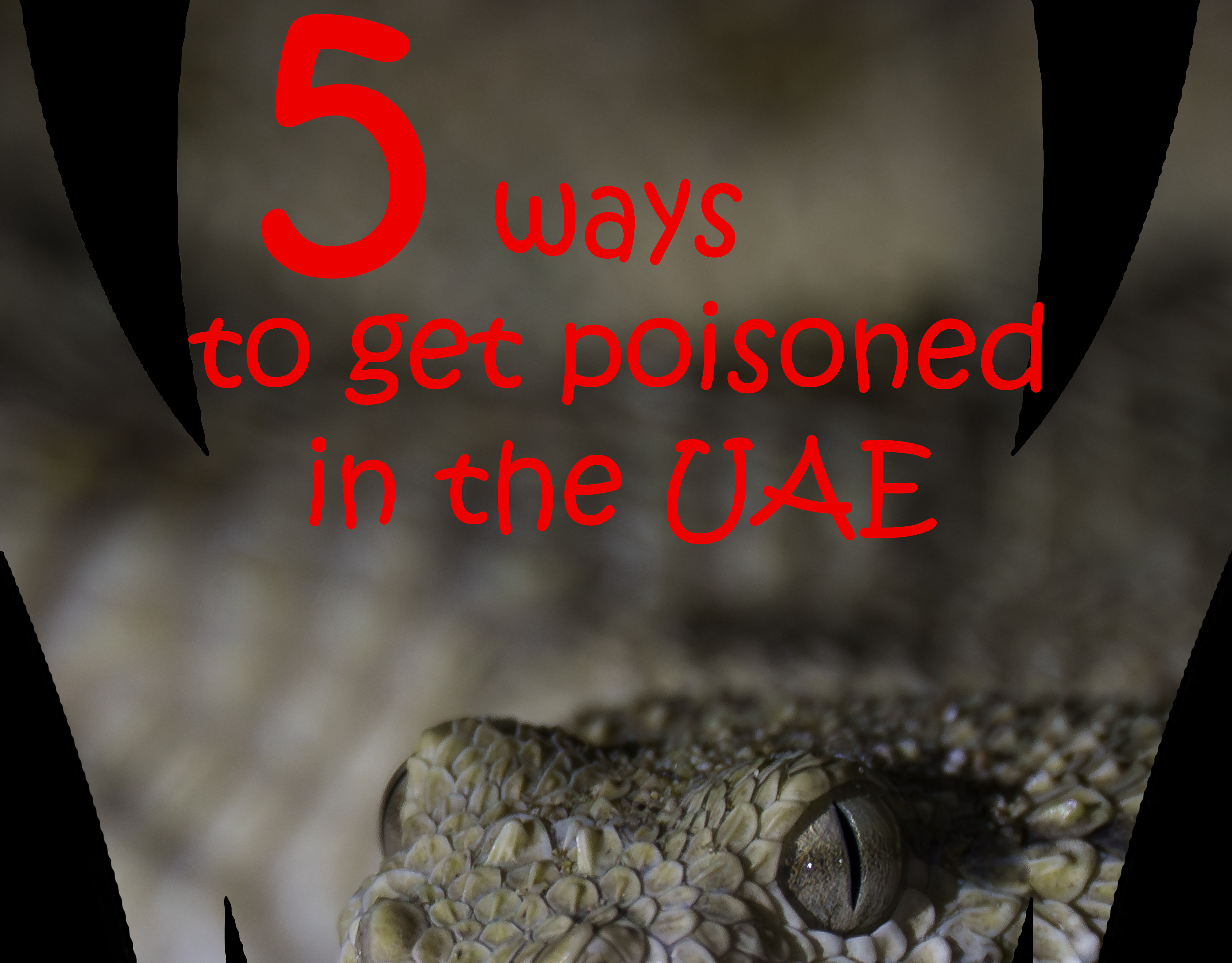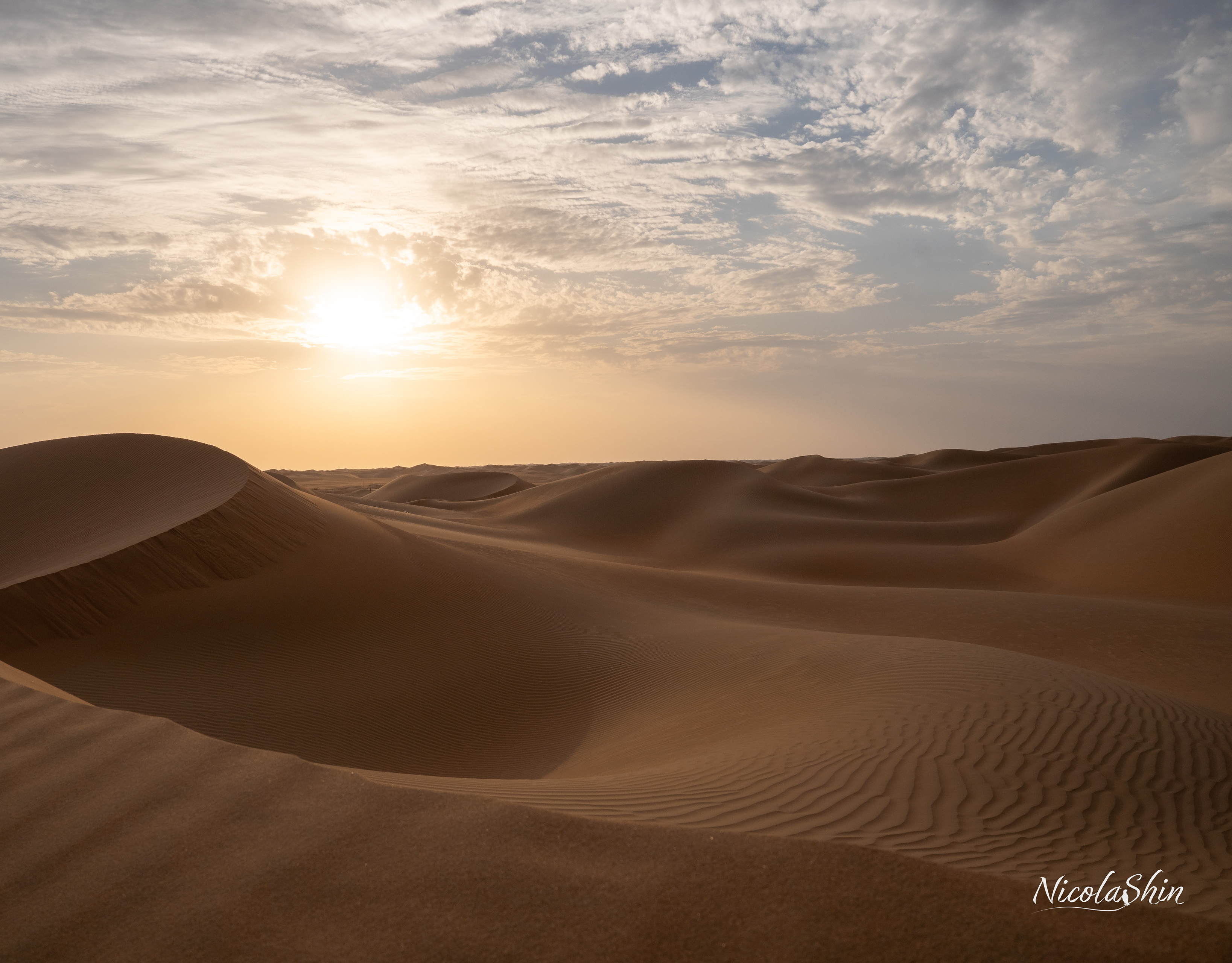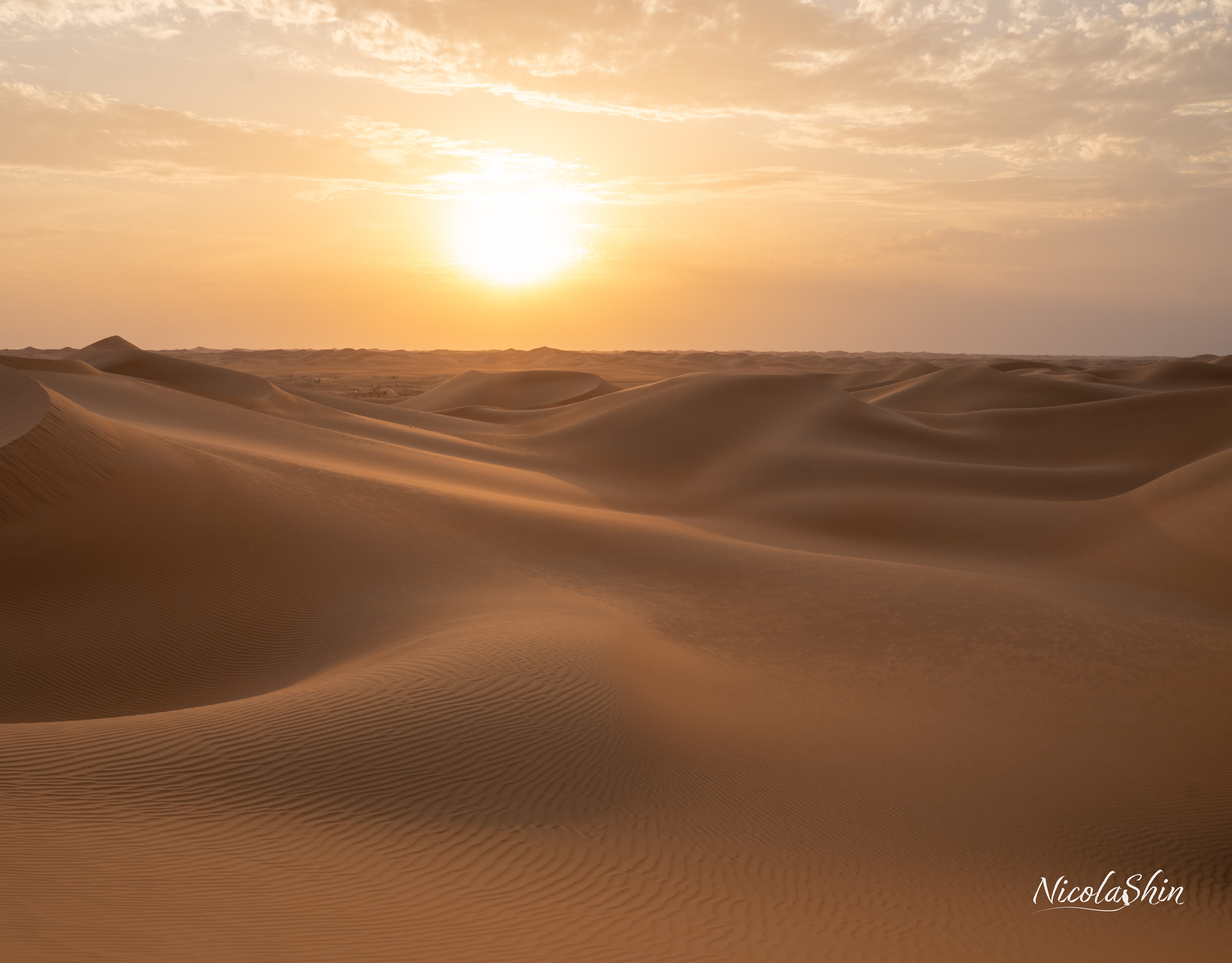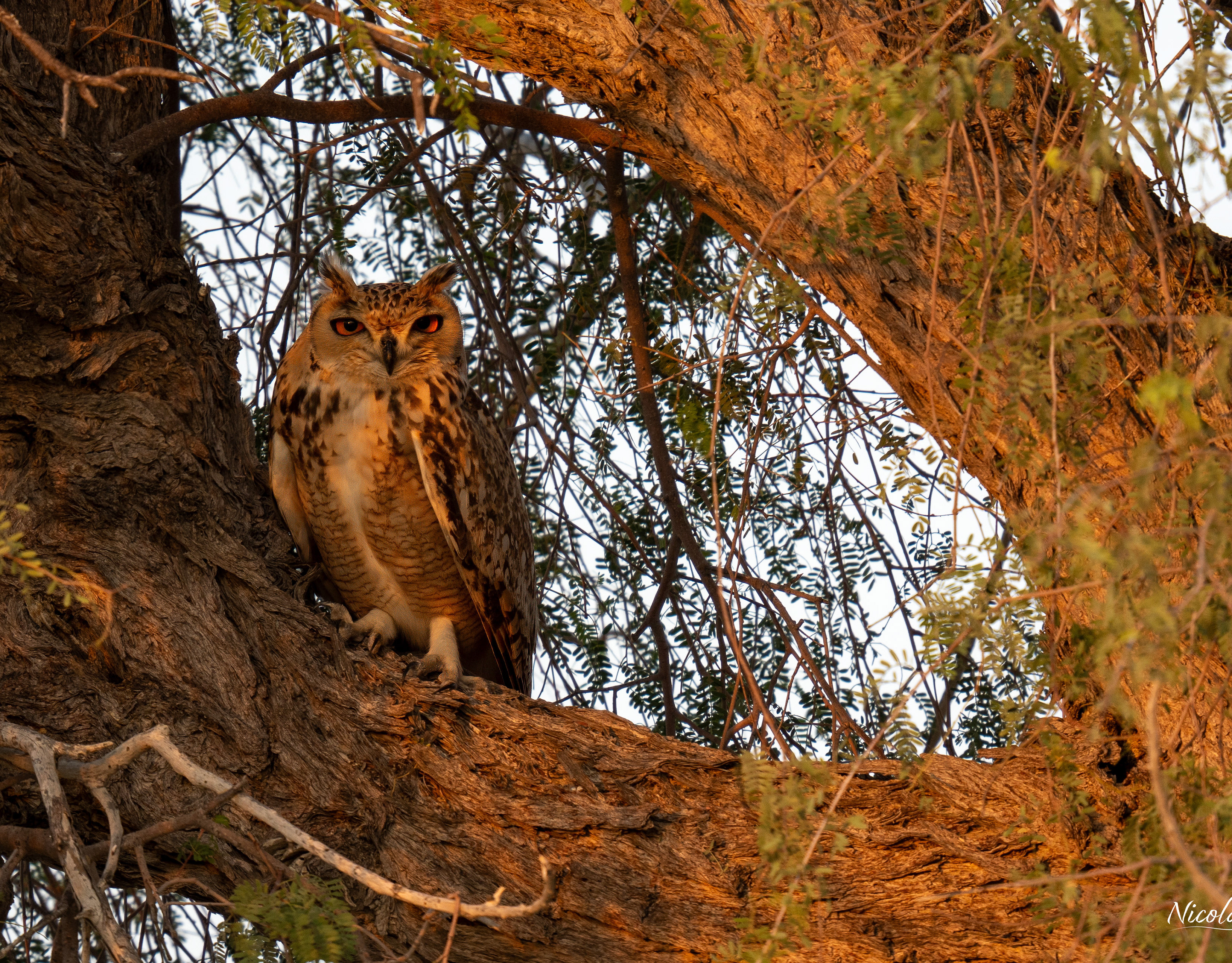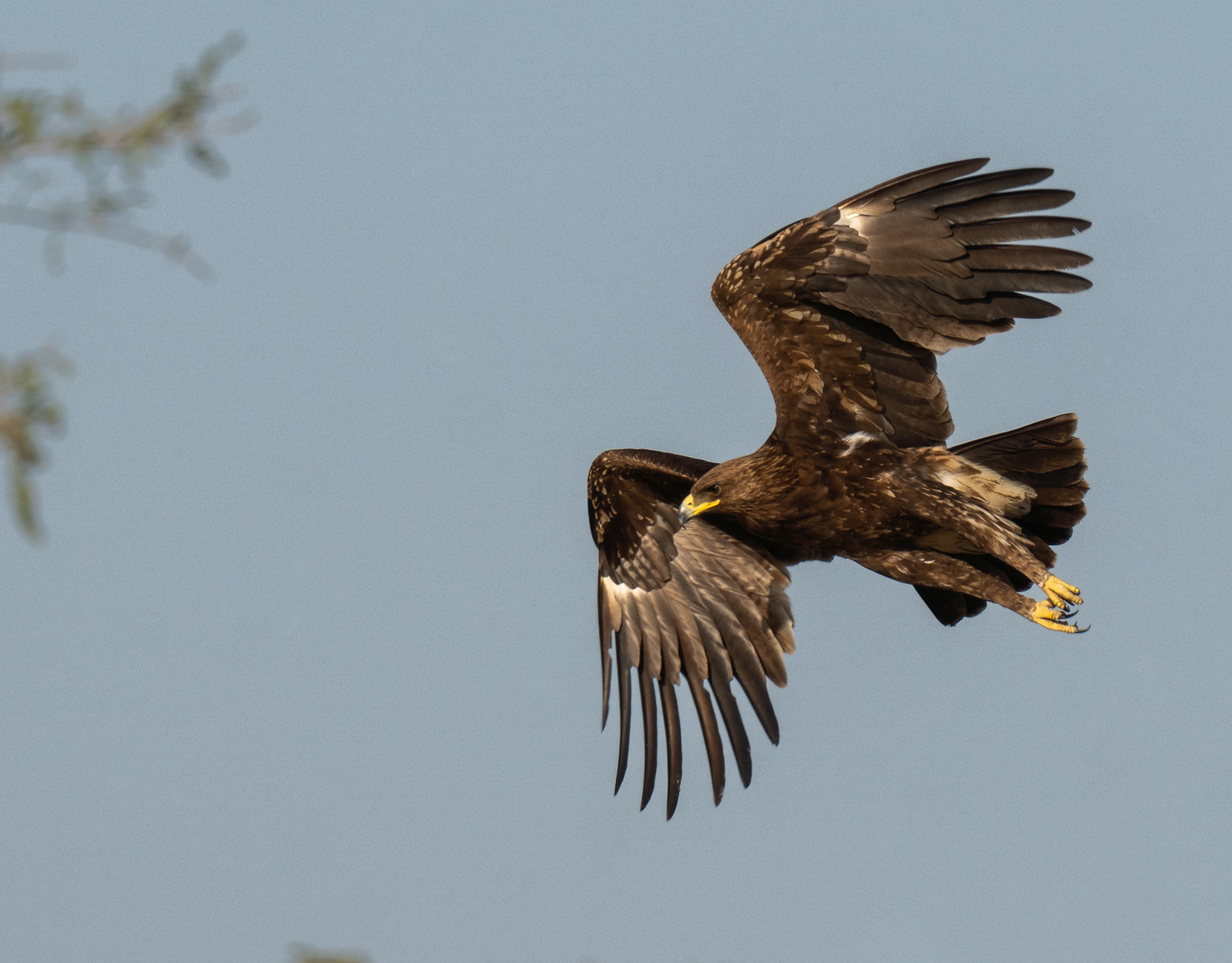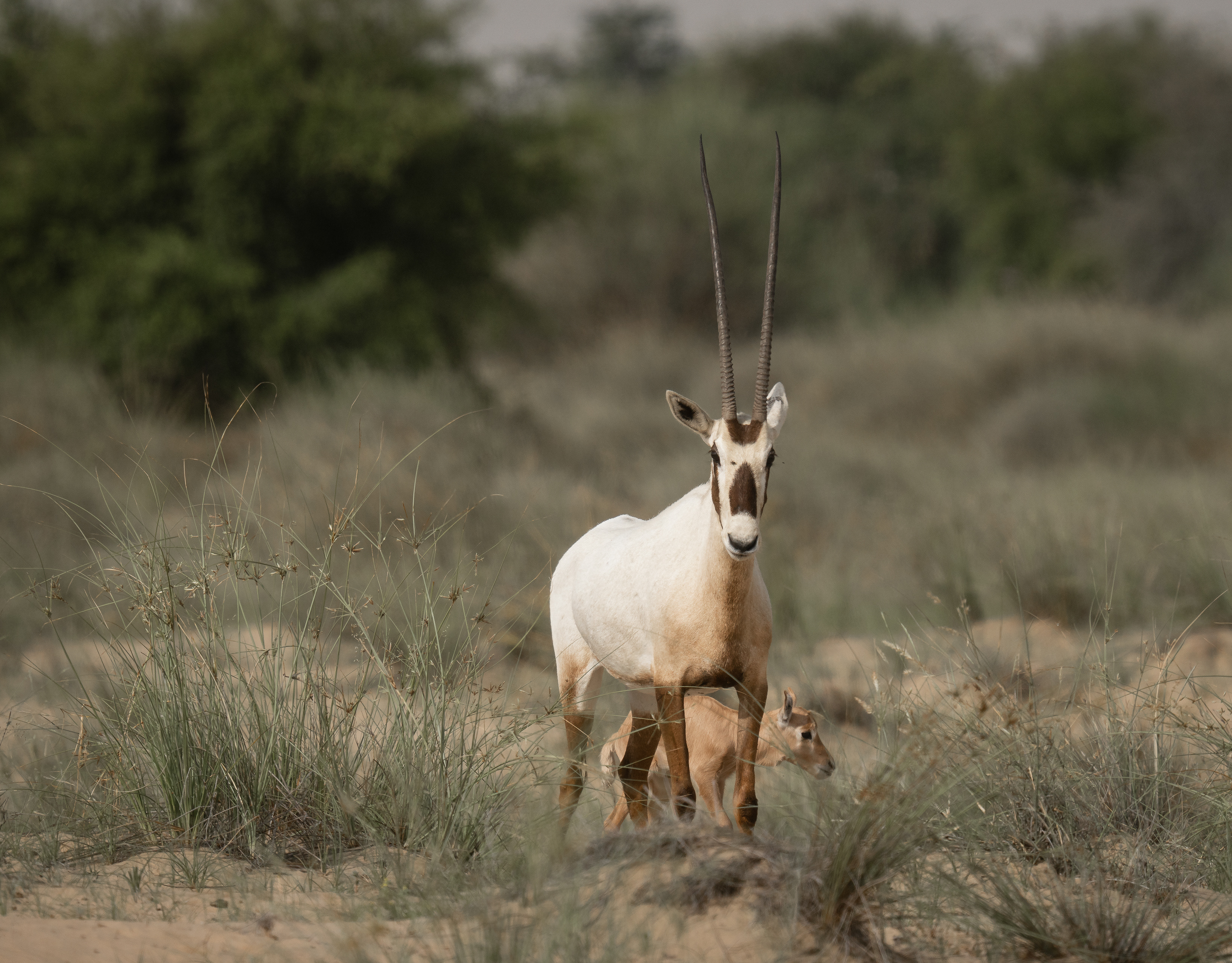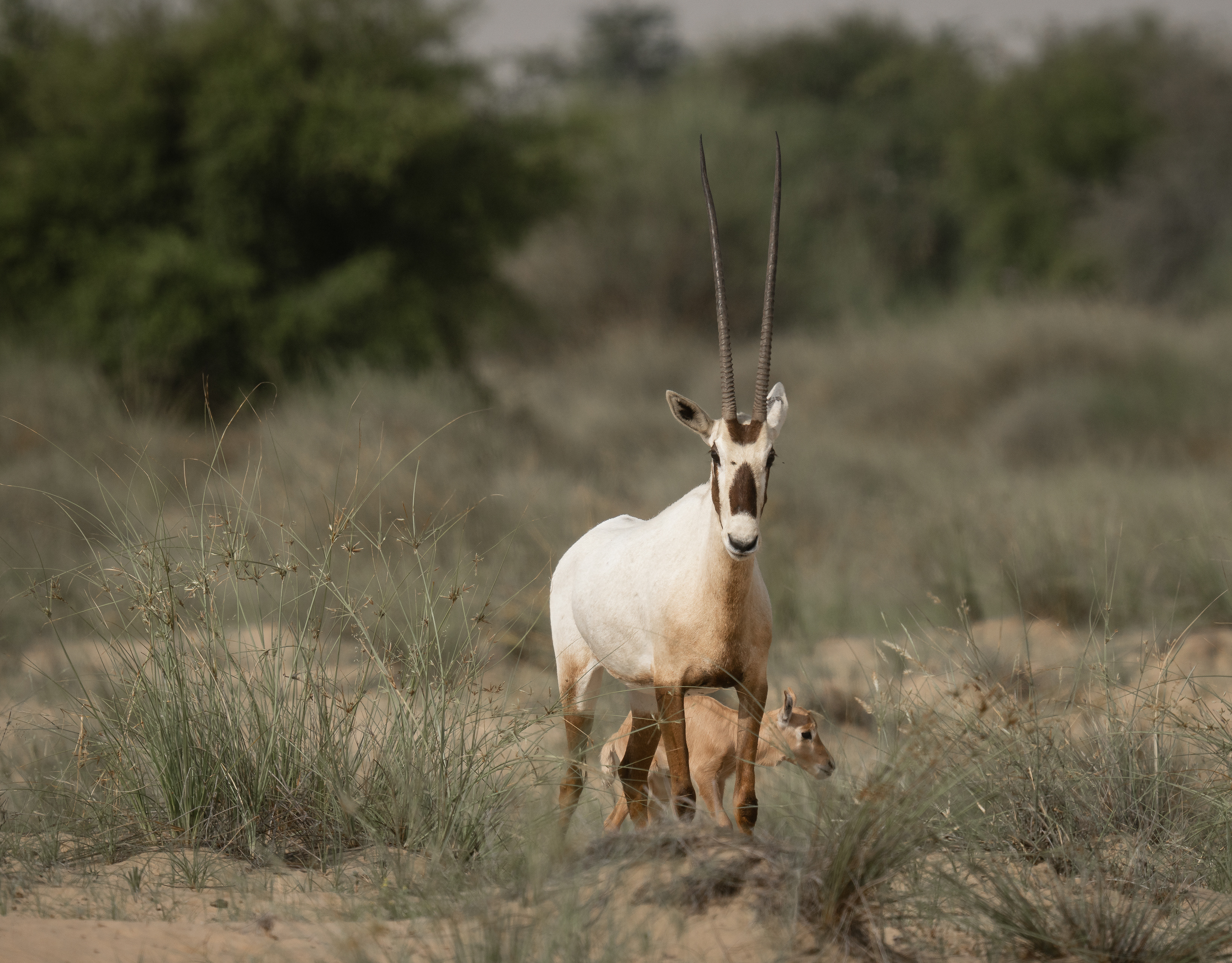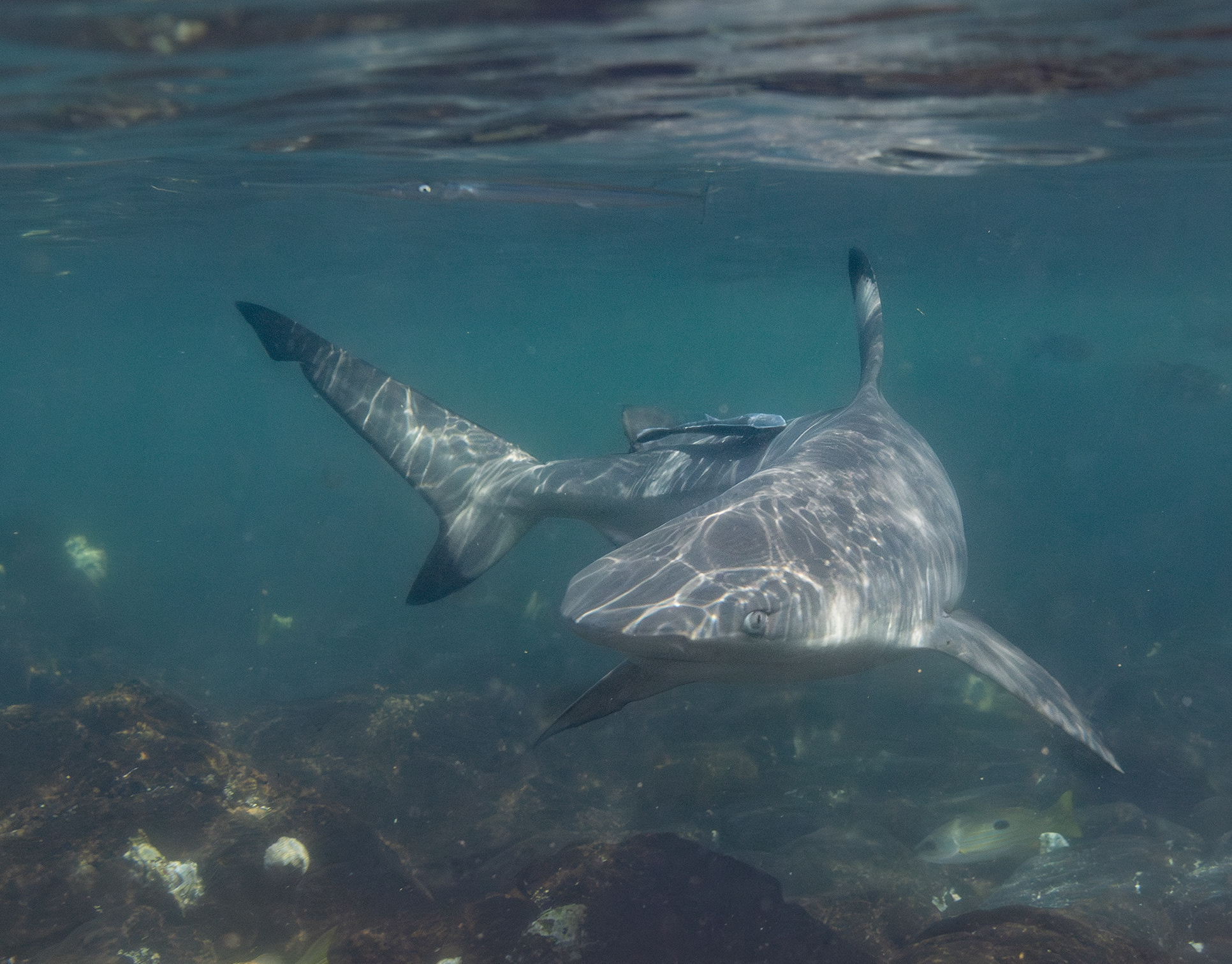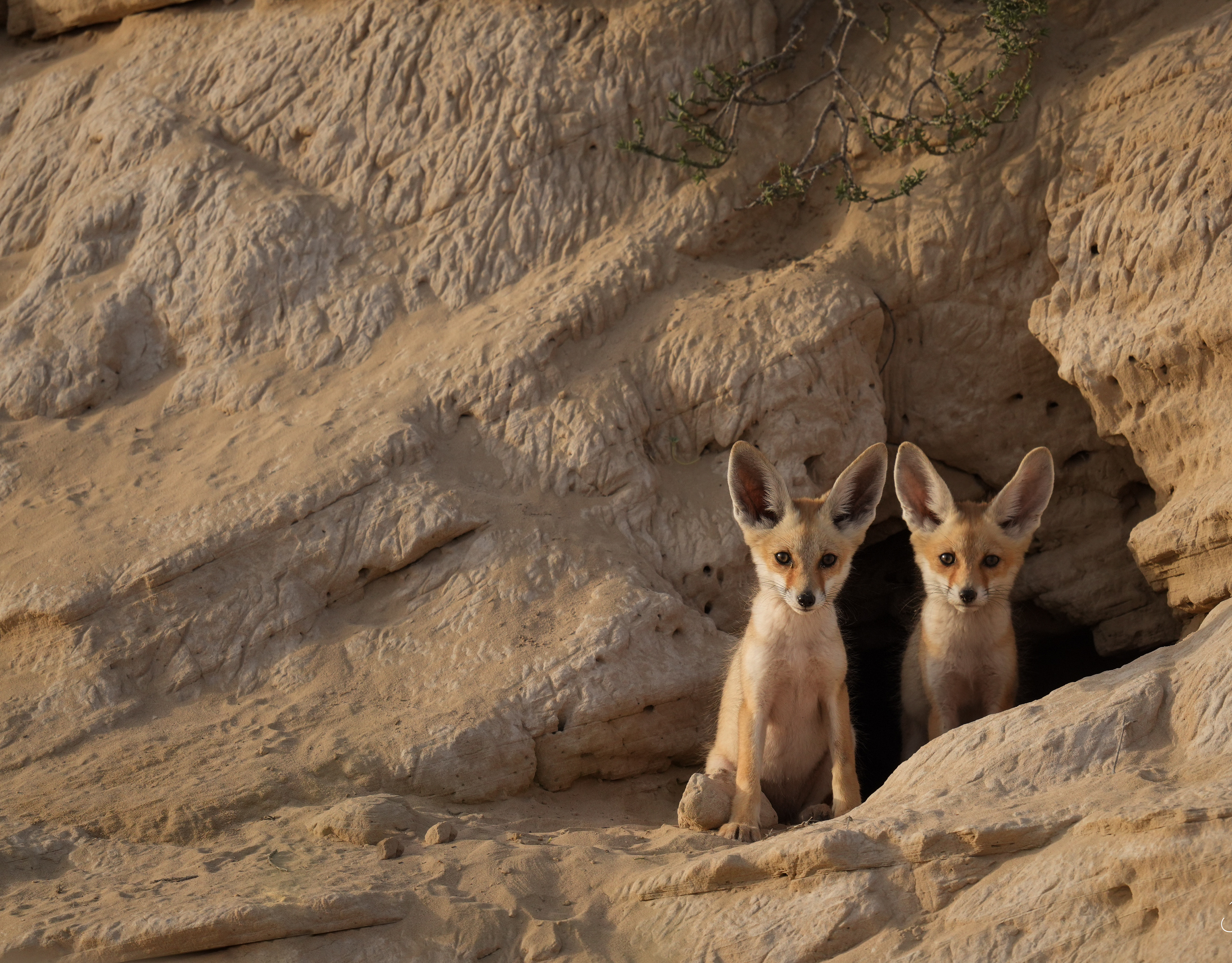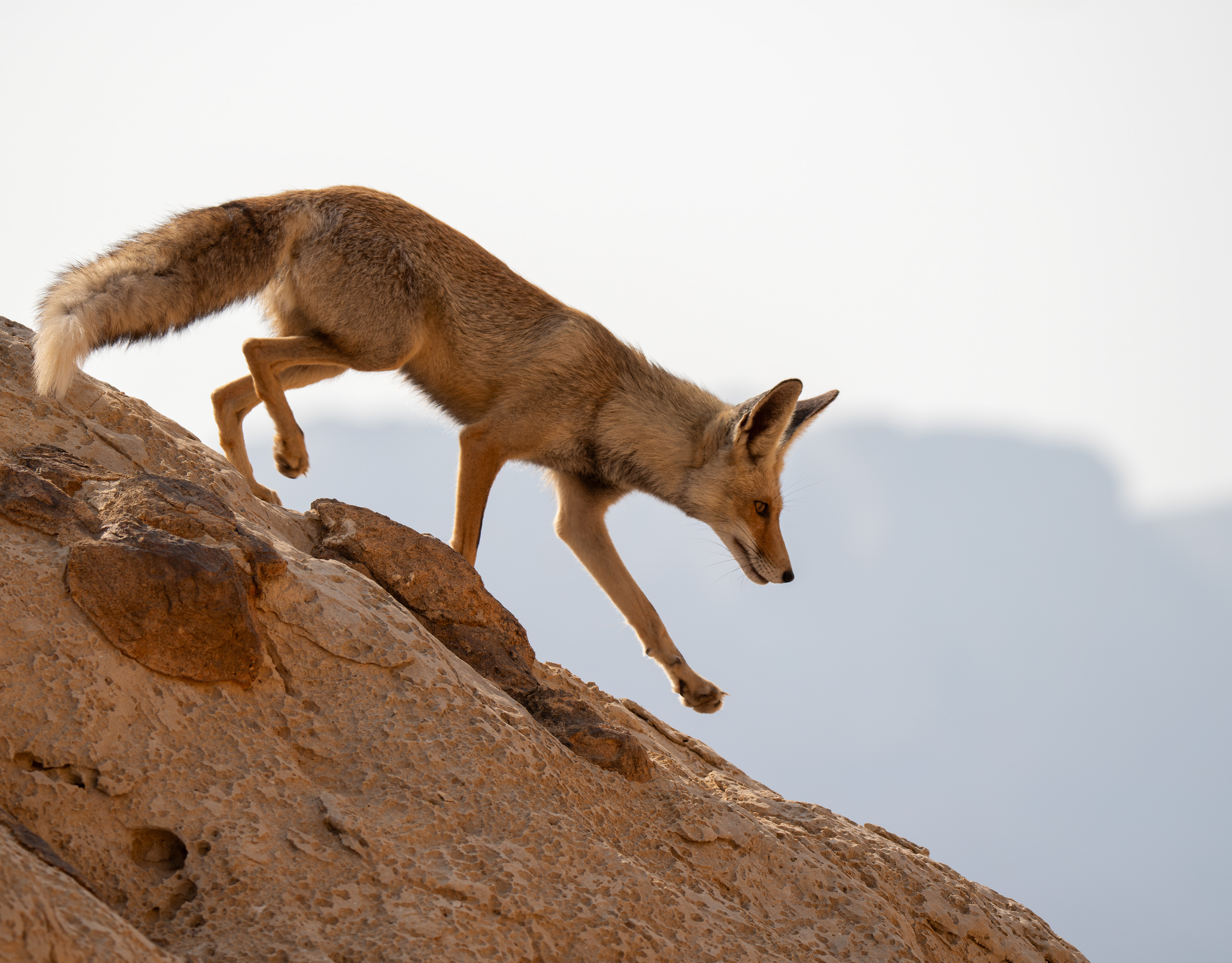Musandam is a governorate of Oman located on the Musandam Peninsula, which extends into the Strait of Hormuz, the narrow entrance to the Persian Gulf from the Arabian Peninsula. The governorate is an exclave, separated from the rest of Oman by the United Arab Emirates. Due to its location, Oman shares partial control of the strategic strait with Iran. The capital of Musandam is Khasab, a small town situated on the coast of the Gulf of Oman. Khasab is a popular tourist destination known for its breathtaking scenery, encompassing mountains and beaches.
We embarked on a two-day adventure in the Fjords of Musandam, boarding a modern Dhow from Dibba, near the UAE-Oman border. A Dhow is a traditional sailing vessel that has been used in the Indian Ocean region for centuries. Characterized by its long, narrow hull and lateen sails, which are triangular and attached to a long yardarm, the Dhow has served various purposes such as fishing, trading, and transportation. While the exact origins of the Dhow are unknown, it is believed to have originated in either the Arabian Peninsula or East Africa. Dhows were instrumental in the historical Arab trade routes across the Indian Ocean, playing a significant role in the spread of Islam and cultural exchange.
Leaving the port behind, the scenery quickly transformed. The arid and rugged mountains gave way to a battle of elements—wind and ocean relentlessly colliding with the stone and rocks. These majestic fjords, shaped by glaciers during the last ice age, bore witness to the timeless struggle of nature. Deep valleys carved by glaciers were subsequently filled with seawater.
Despite the seemingly inhospitable blue and grey landscape, life thrives in the fjords. Various wildlife, including dolphins, turtles, and birds, call this place home.
Our first encounter showcased a commensal relationship between two distinct species (long-term biological interaction in which members of one species gain benefits while those of the other species neither benefit nor are harmed): tunas and terns. Hunting in groups, the tunas herded bait balls of mackerel towards the surface. Opportunistic terns dived into the bait balls, effortlessly seizing an easy meal.
Our first encounter showcased a commensal relationship between two distinct species (long-term biological interaction in which members of one species gain benefits while those of the other species neither benefit nor are harmed): tunas and terns. Hunting in groups, the tunas herded bait balls of mackerel towards the surface. Opportunistic terns dived into the bait balls, effortlessly seizing an easy meal.
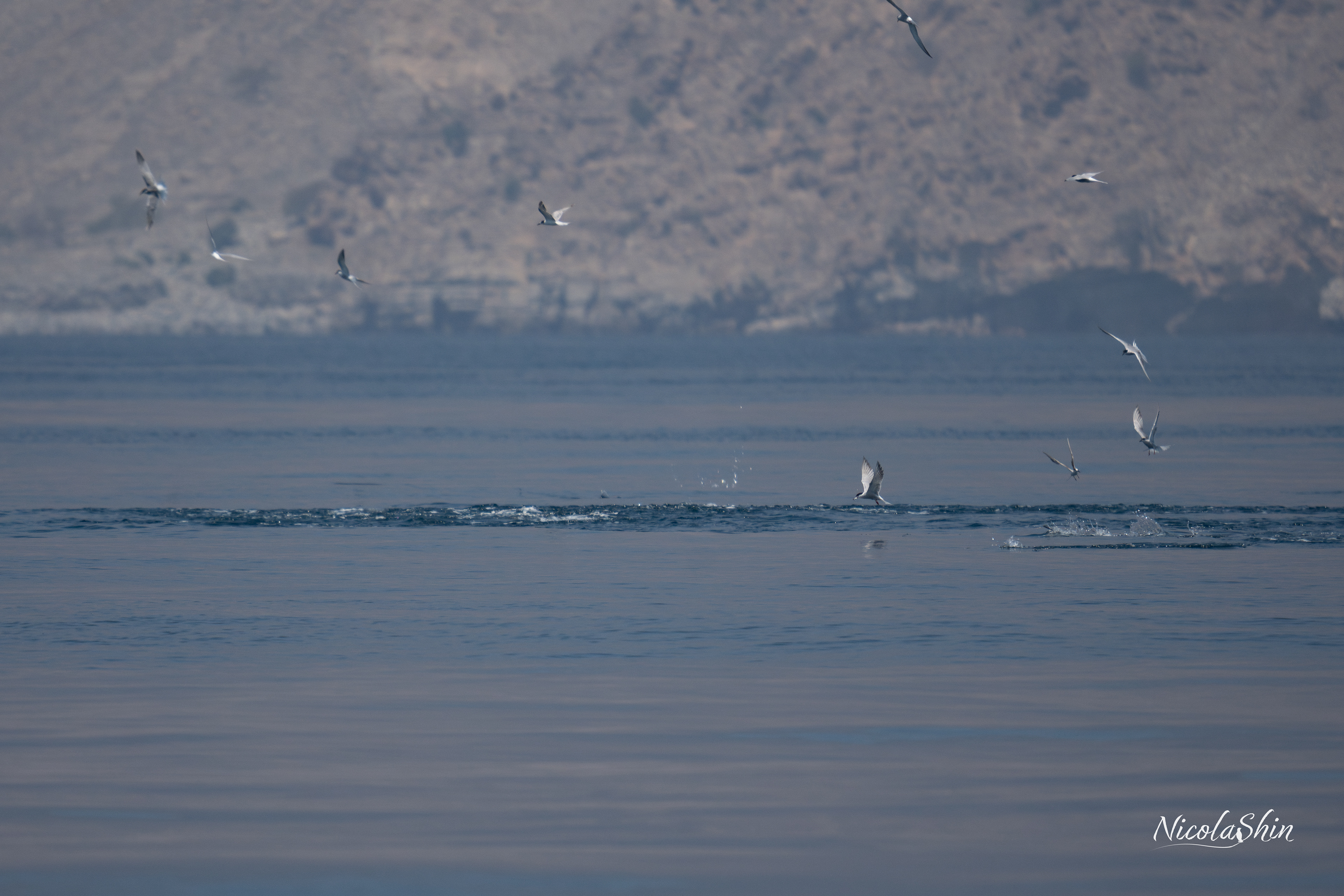
Commensal relationship - Tunas and terns

Commensal relationship - Tunas and terns
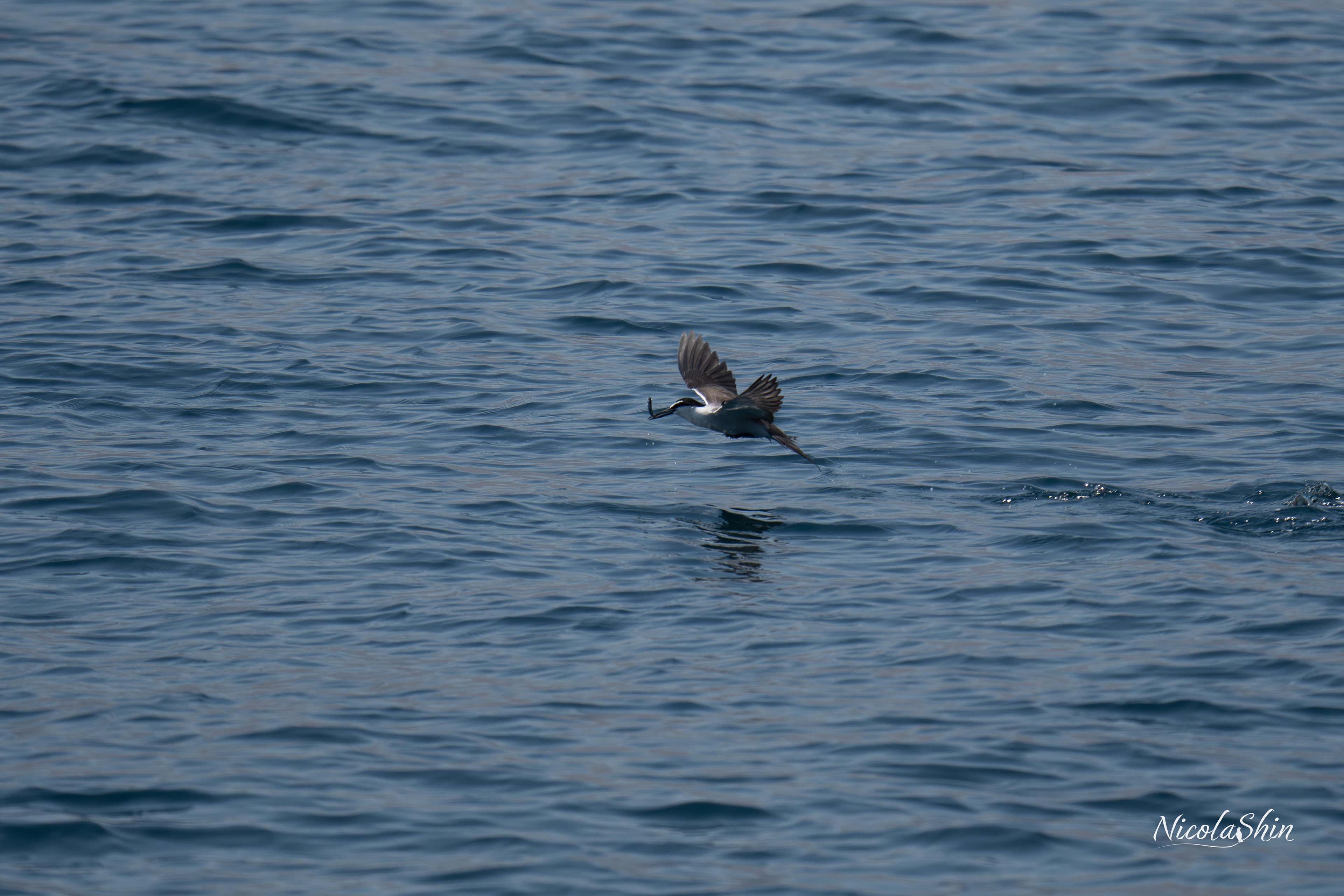
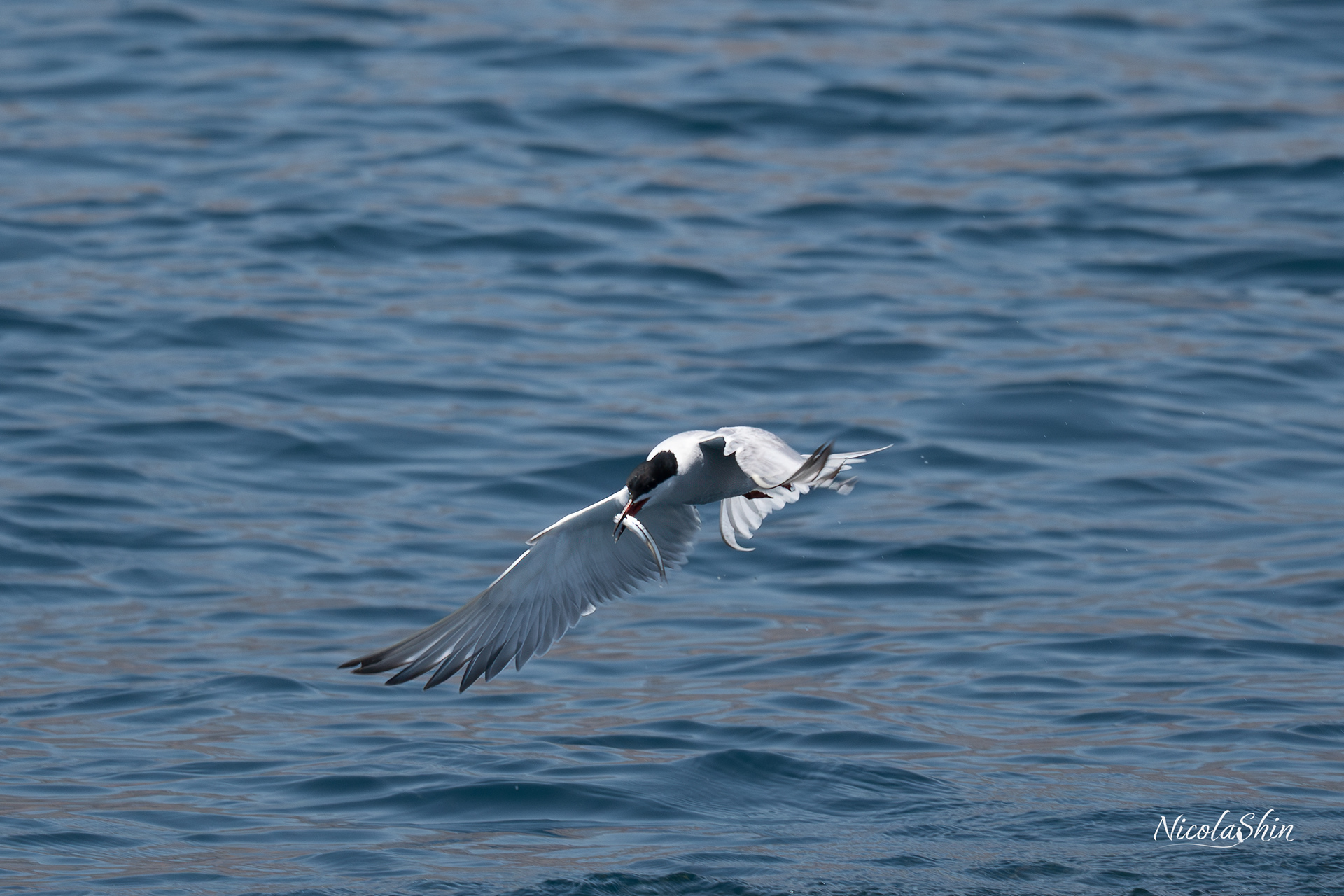
Beneath the surface echoing the tuna and tern collaboration, a symbiotic relationship unfolds between shrimp and goby. These dissimilar creatures have joined forces to establish a mutually beneficial partnership. The shrimp excavates burrows in the sand, while the goby seeks refuge within and protectes the shrimp from predators. In return, the shrimp provides food for the goby. Due to its limited swimming abilities, the shrimp relies on the goby's keen eyesight to detect predators. When a threat is spotted, the goby signals the shrimp by flashing its fins, prompting a swift retreat into the burrow.

Osprey

Osprey
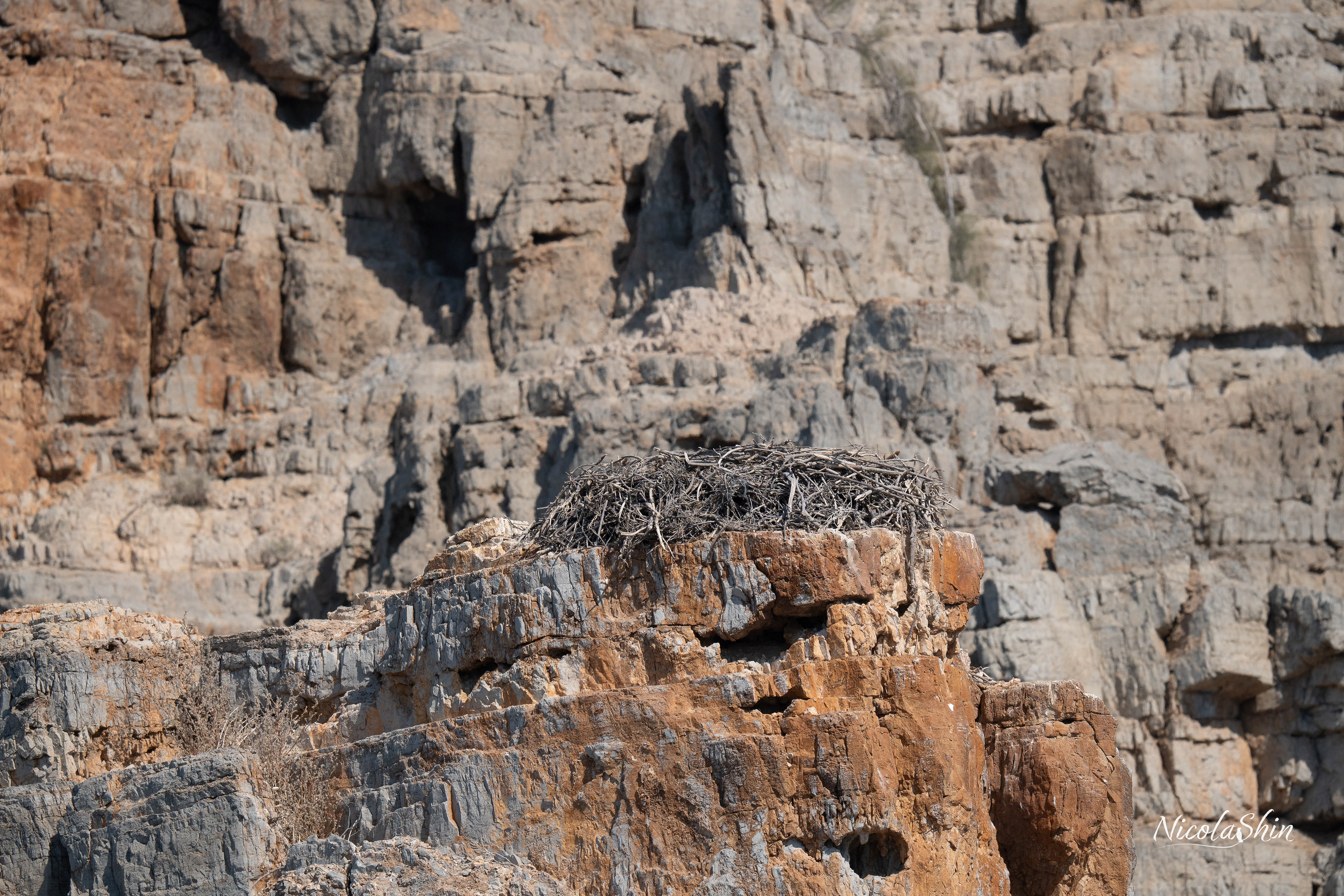
Osprey nest

Osprey
One of the iconic inhabitants of Musandam is the Osprey, nesting on the cliffs. As the only raptor capable of diving into water to capture prey, it became a captivating sight during our weekend trip. Throughout our journey, we encountered five Ospreys, and for me, it was a thrilling first-time experience observing them in the wild. The Osprey is a diurnal fish-eating bird of prey with a global distribution. This large raptor exceeds 60 cm in length and boasts a wingspan of approximately 180 cm. Its upperparts are brown, while the head and underparts predominantly appear greyish. Sporting a long, hooked beak and narrow wings, the Osprey's feet are uniquely adapted for catching fish, featuring sharp talons and a reversible toe enabling it to grasp prey with two toes in front and two behind.
After enjoying a well-deserved dinner barbecue on a secluded beach accessible only by boat, we spent the night on the deck of a dhow. The serene night was gently interrupted by the radiant glow of a full moon, illuminating the dancing seafoam carried by the waves.
The following morning, we awoke to the sight of green turtles gracefully surfacing to breathe, their movements resembling a slow, synchronized dance. The waters of Oman are home to five different species of turtles, with approximately 20,000 turtles visiting the country's beaches during the summer months to lay their eggs. It left us contemplating the potential for future adventures in this remarkable place.
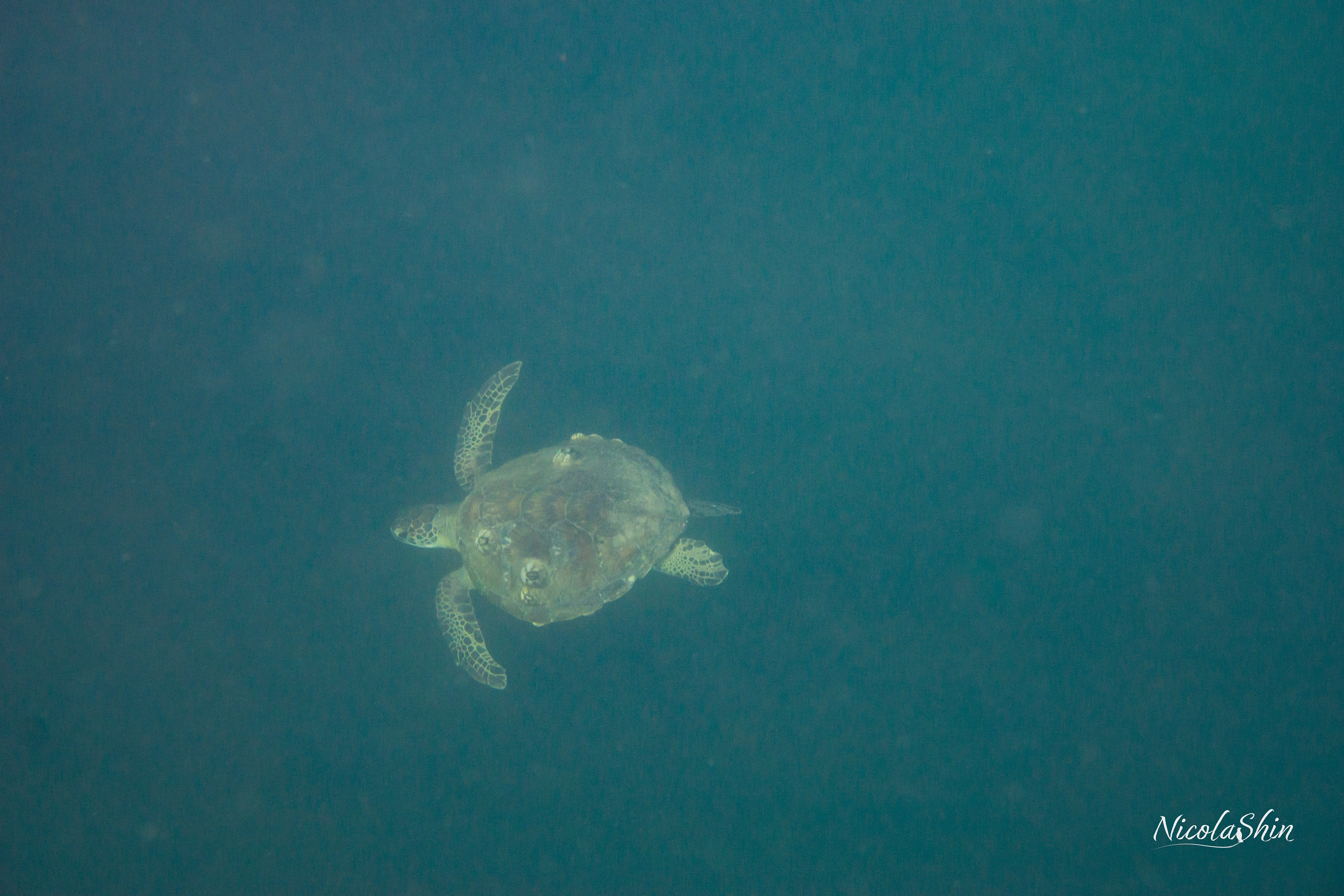
Green Turtle
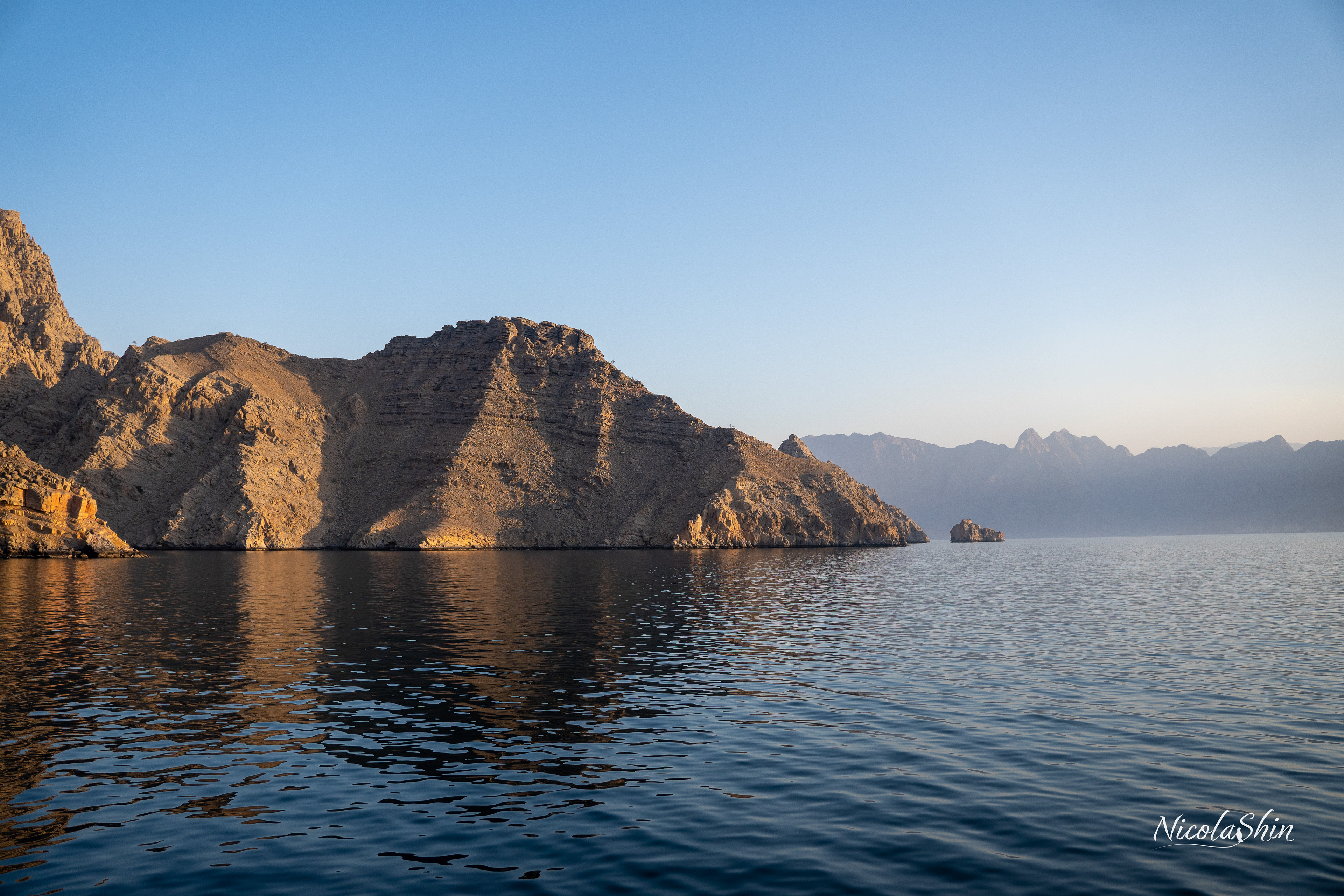
Fjords of Musandam

A bright Moon overseeing our sleep
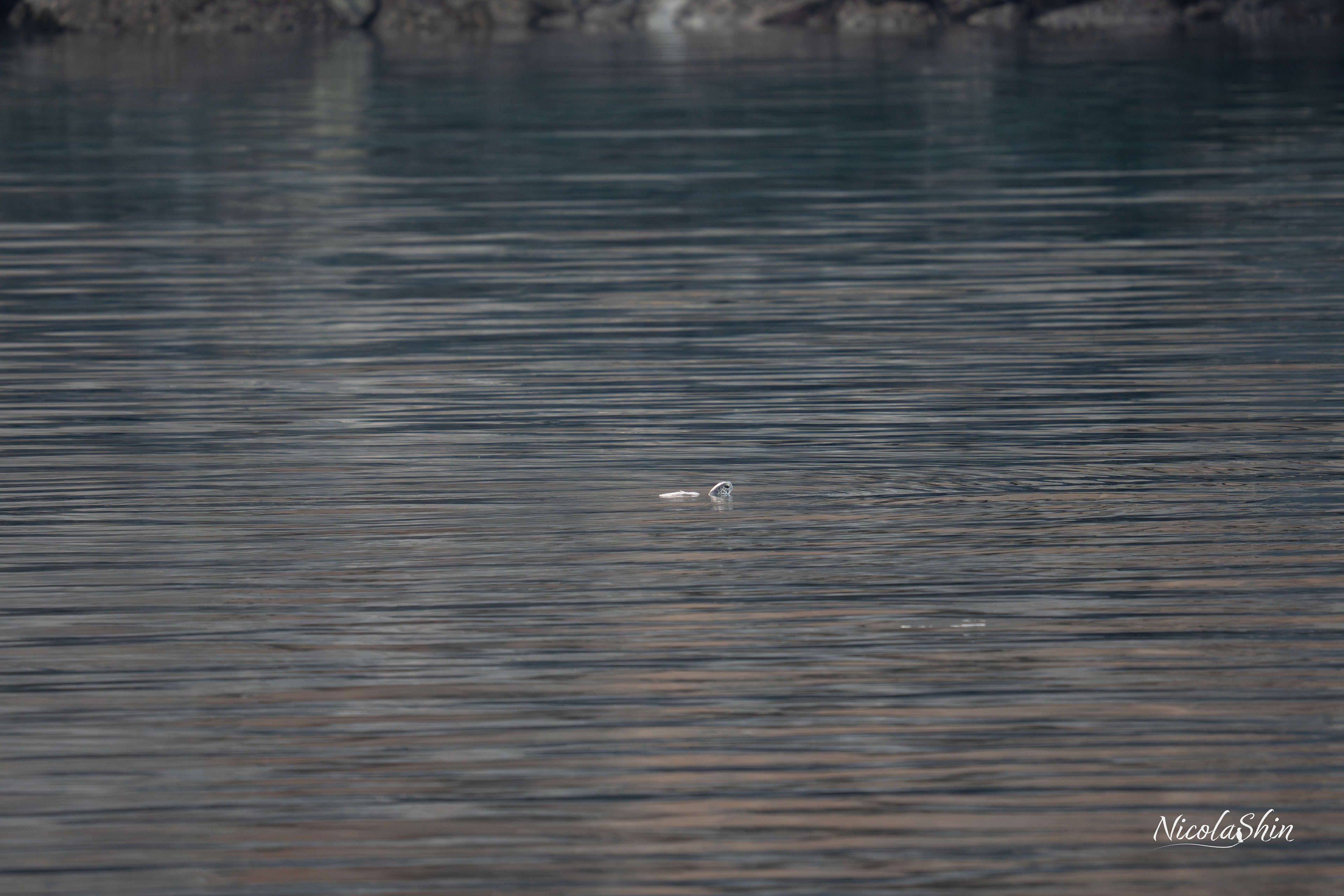
Green Turtle breathing

Butterflyfish
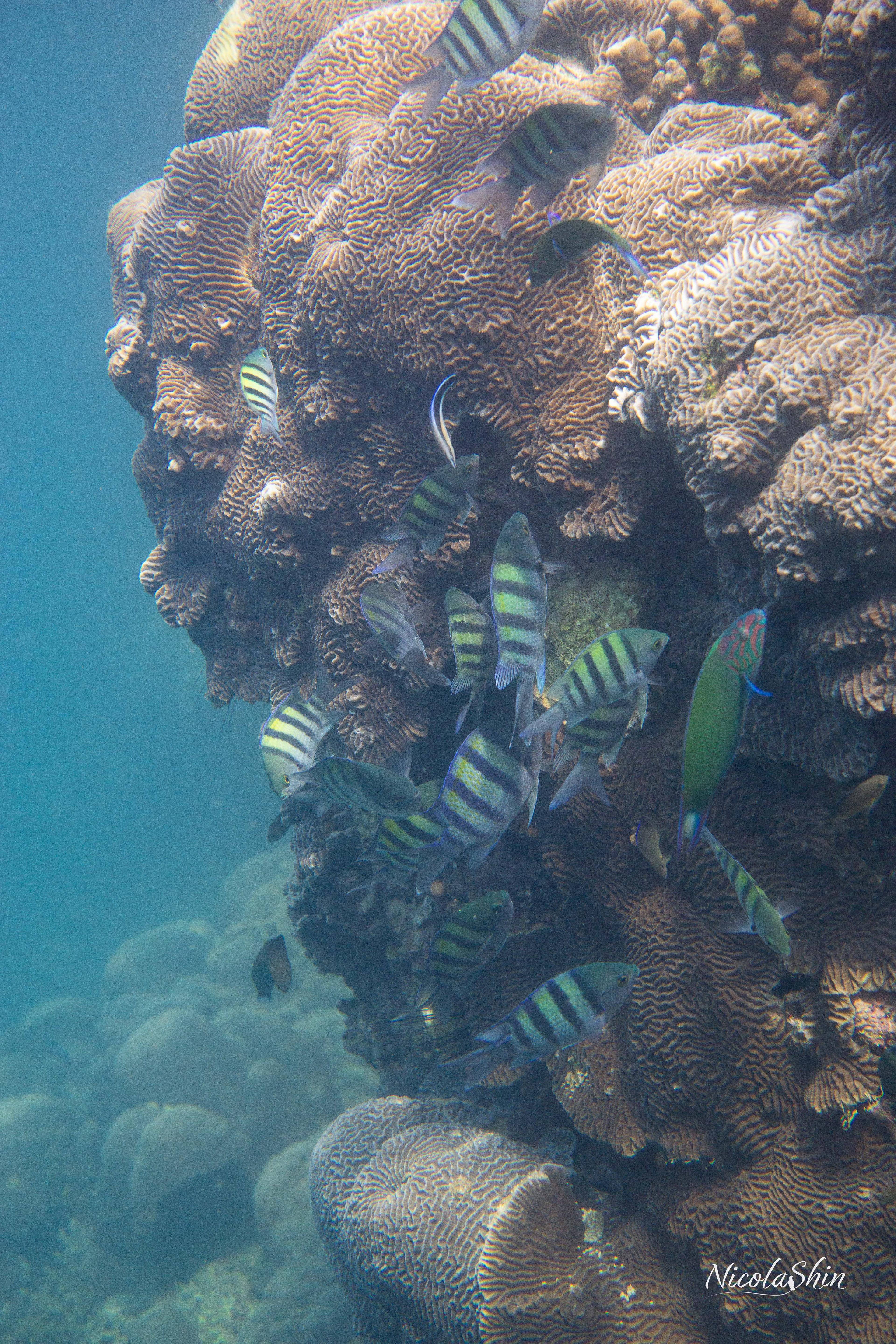
Indo-pacific sergeant
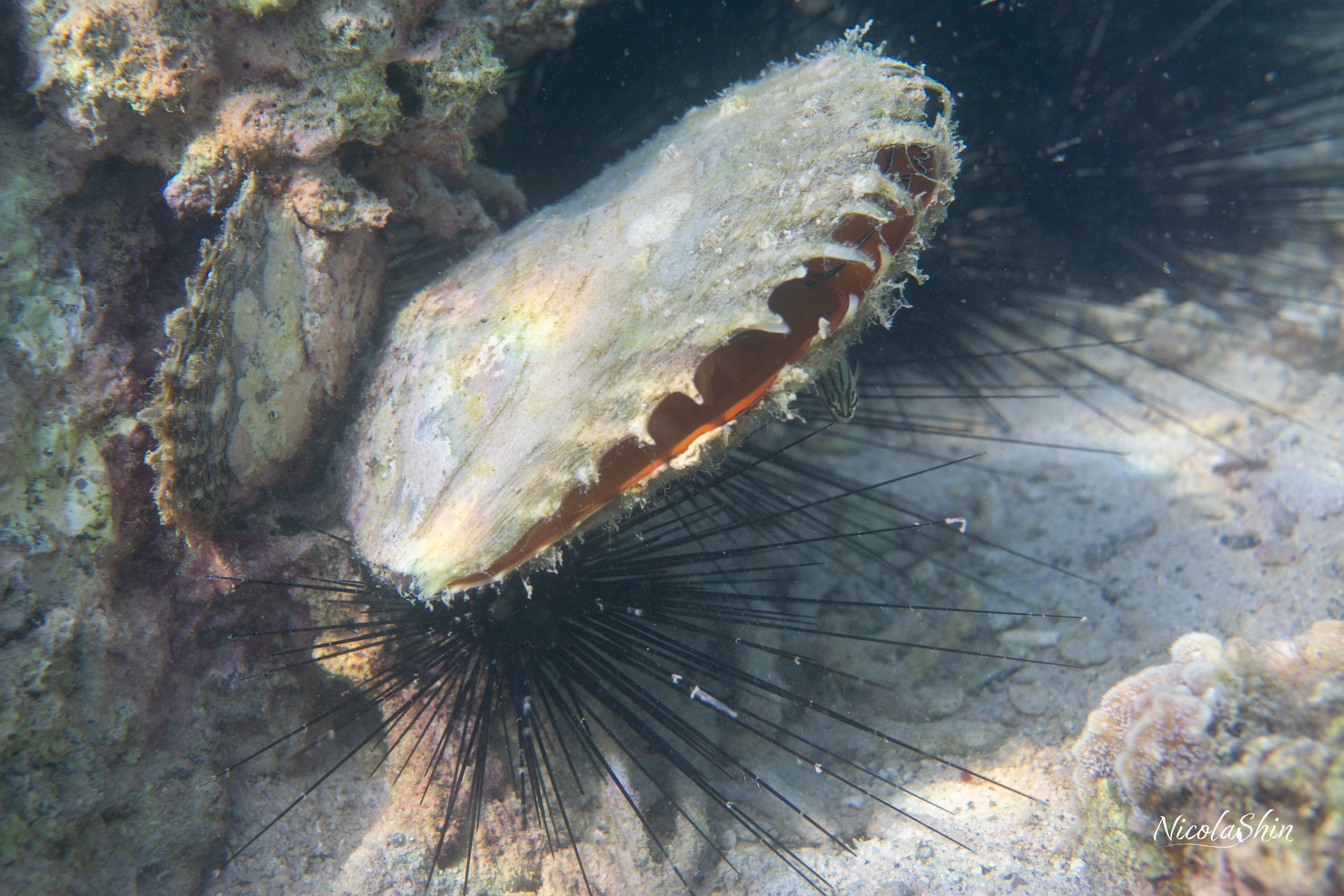
black-lip pearl shell
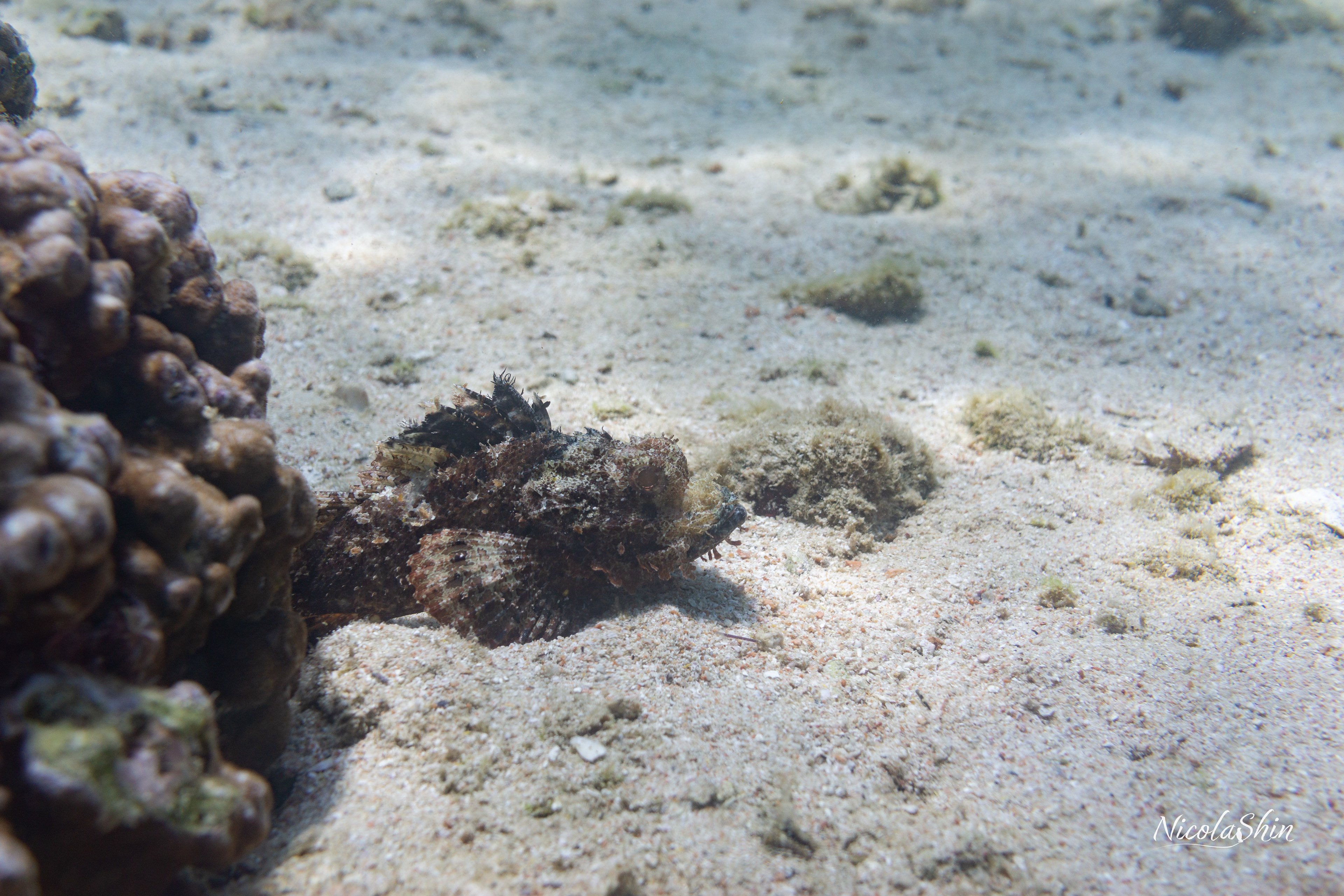
Stonefish

Moray eel
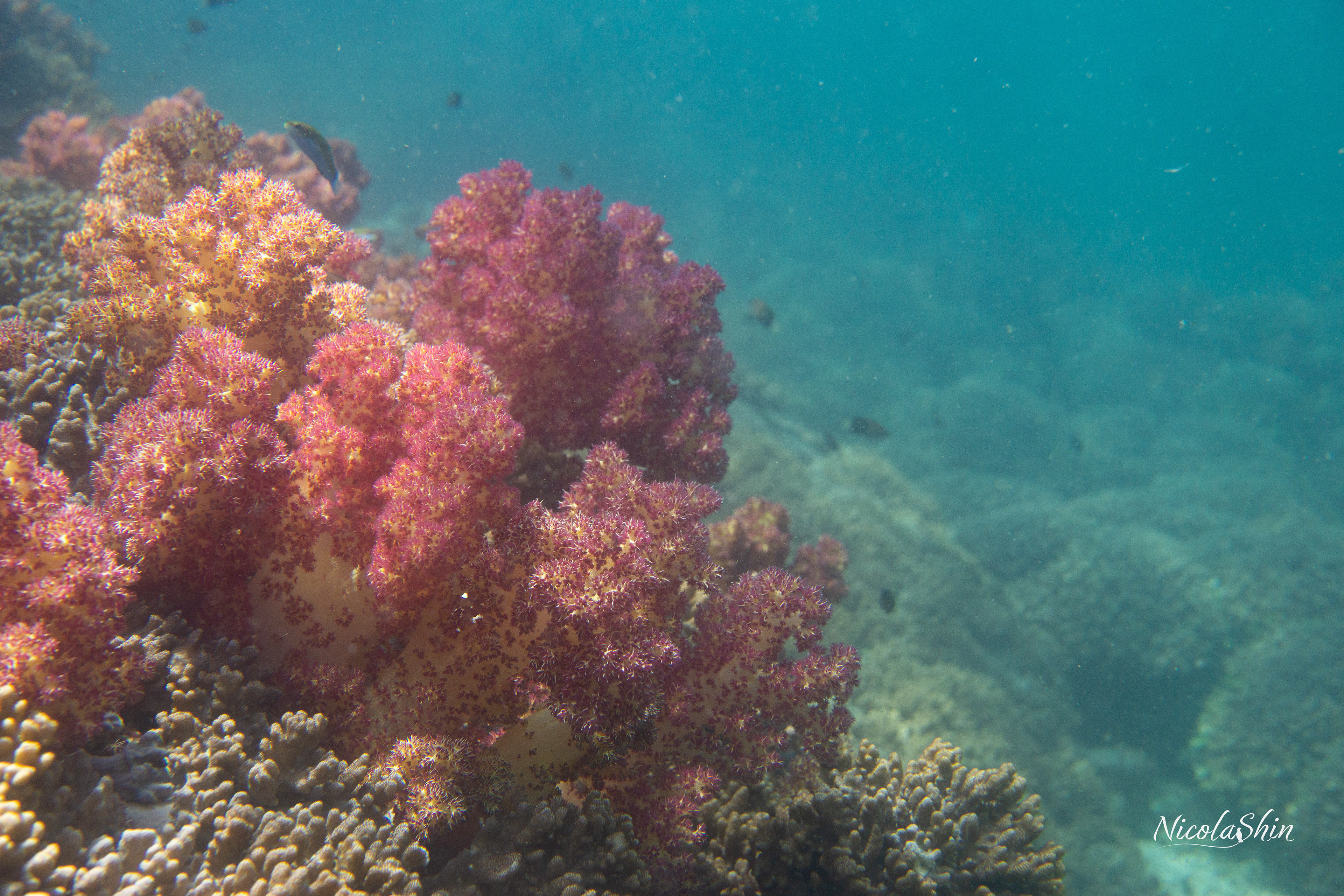
Undoubtedly, the highlight of our trip was exploring the vibrant coral reefs. The diversity of both hard and soft corals was truly impressive, providing a thriving habitat for a plethora of underwater wildlife. A study conducted in 2016 demonstrated that the reefs are in relatively good health in Musandam, showcasing resilience against coral bleaching and the impacts of human activity. The isolation of these reefs has played a role in their preservation, as they are not as heavily affected by human activities compared to other reefs around the world. However, we couldn't ignore the threats looming over the reefs, as we encountered numerous plastic bottles and witnessed damage to some shallow reefs caused by boats and tourists. Signs of coral bleaching were also becoming evident.
During our exploration of the local reefs, we encountered an array of fascinating inhabitants, including angel fish, clown fish, grouper, butterflyfish, triggerfish, and more. We were even fortunate enough to spot black-lip pearl shells, once harvested for their pearls. Among our group, some members were lucky to catch glimpses of blacktip sharks and rays, adding to the excitement of our underwater encounters.
As we made our way back to Dibba, our journey was accompanied by a pod of dolphins, putting on a captivating show. Spinner dolphins delighted us with their impressive leaps, spinning through the air with grace, while common dolphins raced alongside the bow of our dhow. Known for their acrobatic displays, spinner dolphins can execute up to seven full rotations in a single leap. It was an awe-inspiring finale to our weekend adventure, leaving us with memories that will endure.
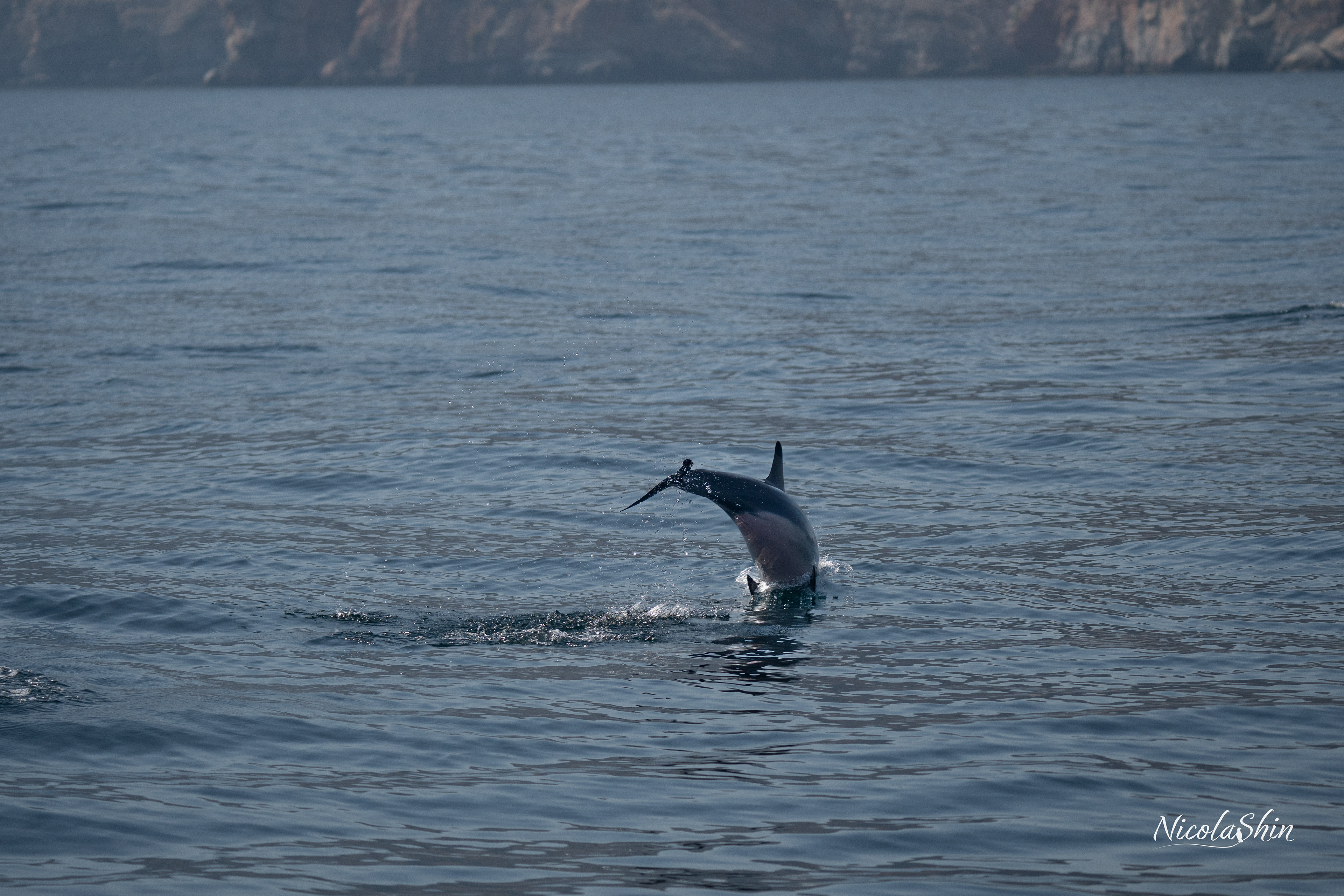
Spinner dolphin
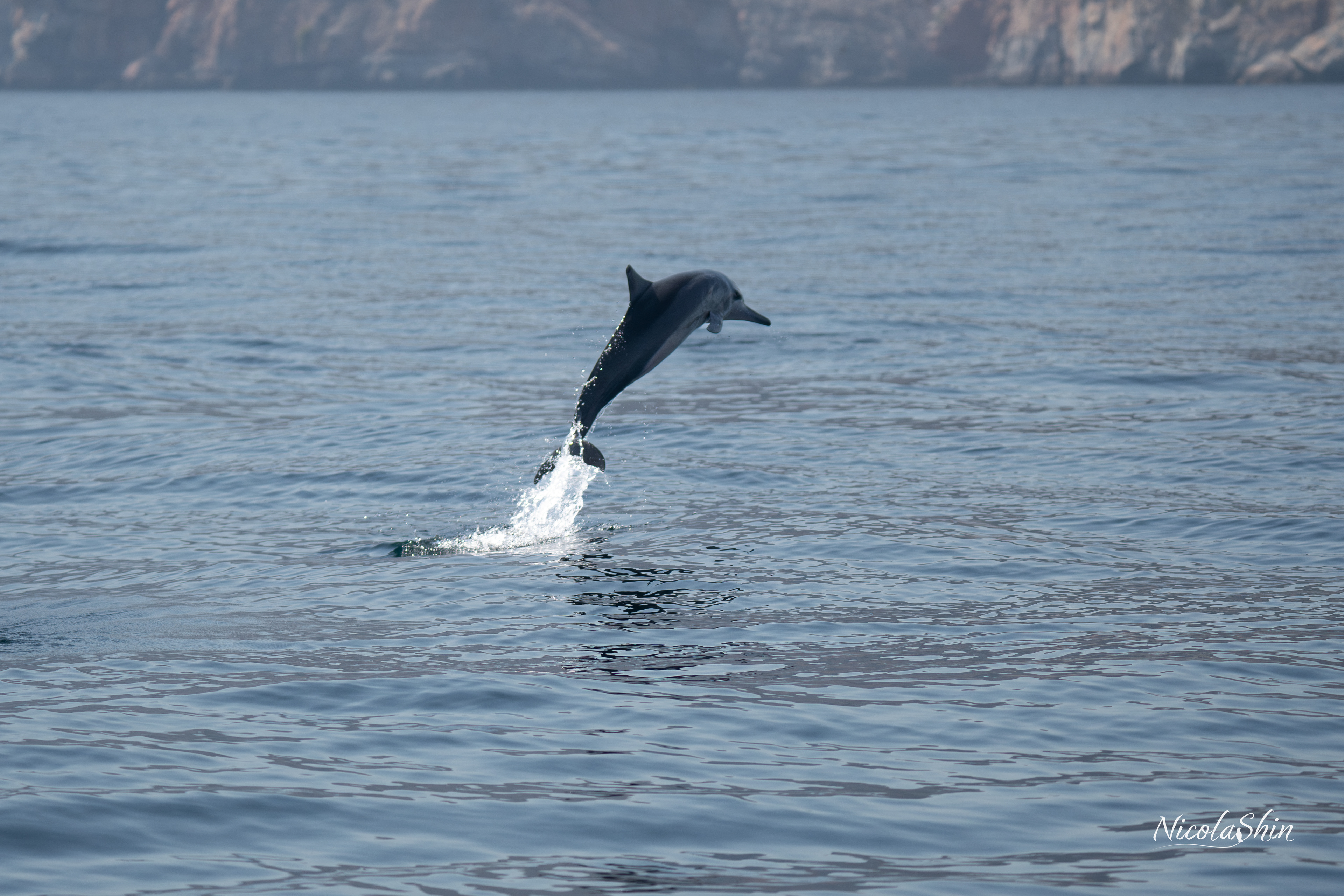
Spinner dolphin
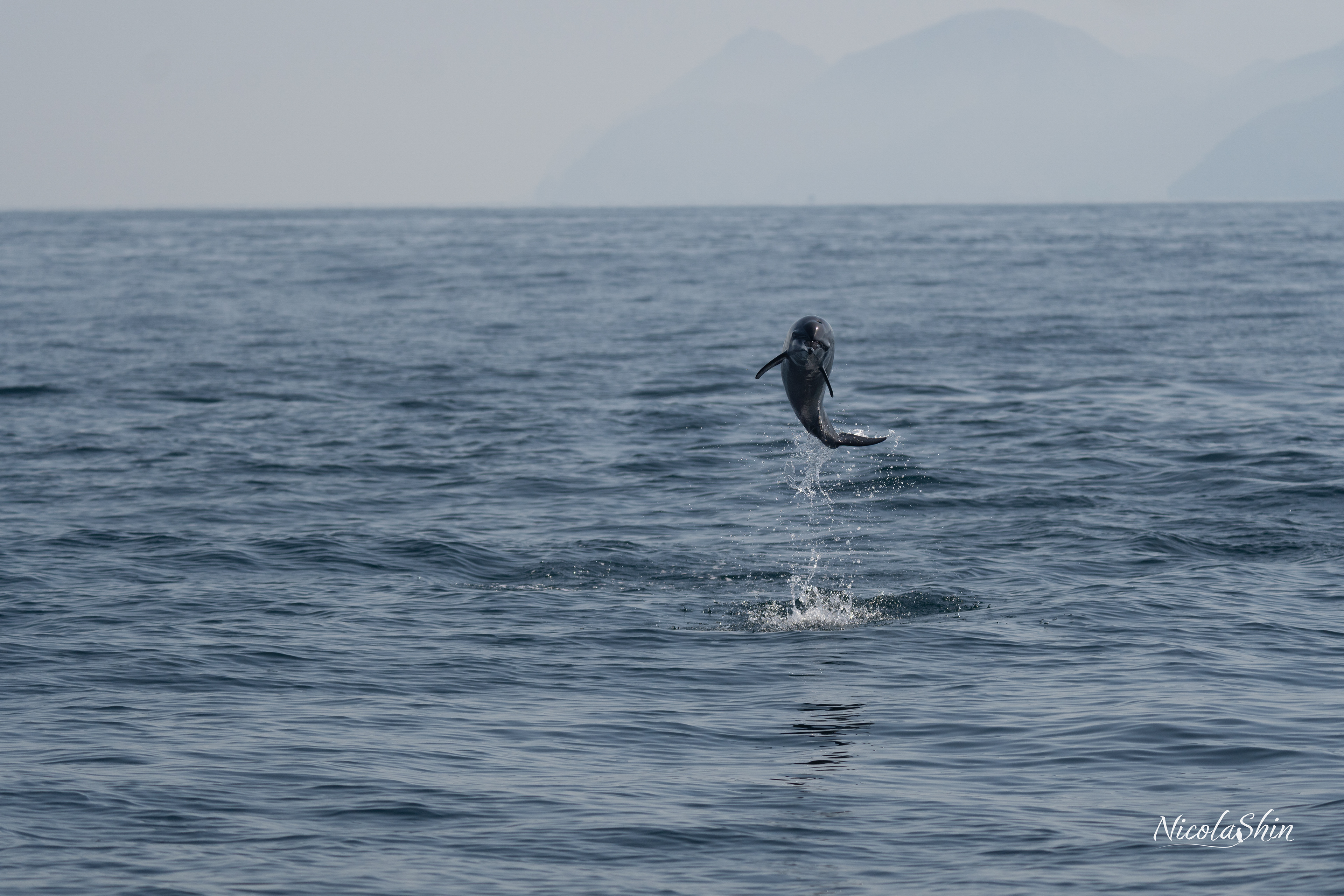
Spinner dolphin

Spinner dolphin

Coral bleaching
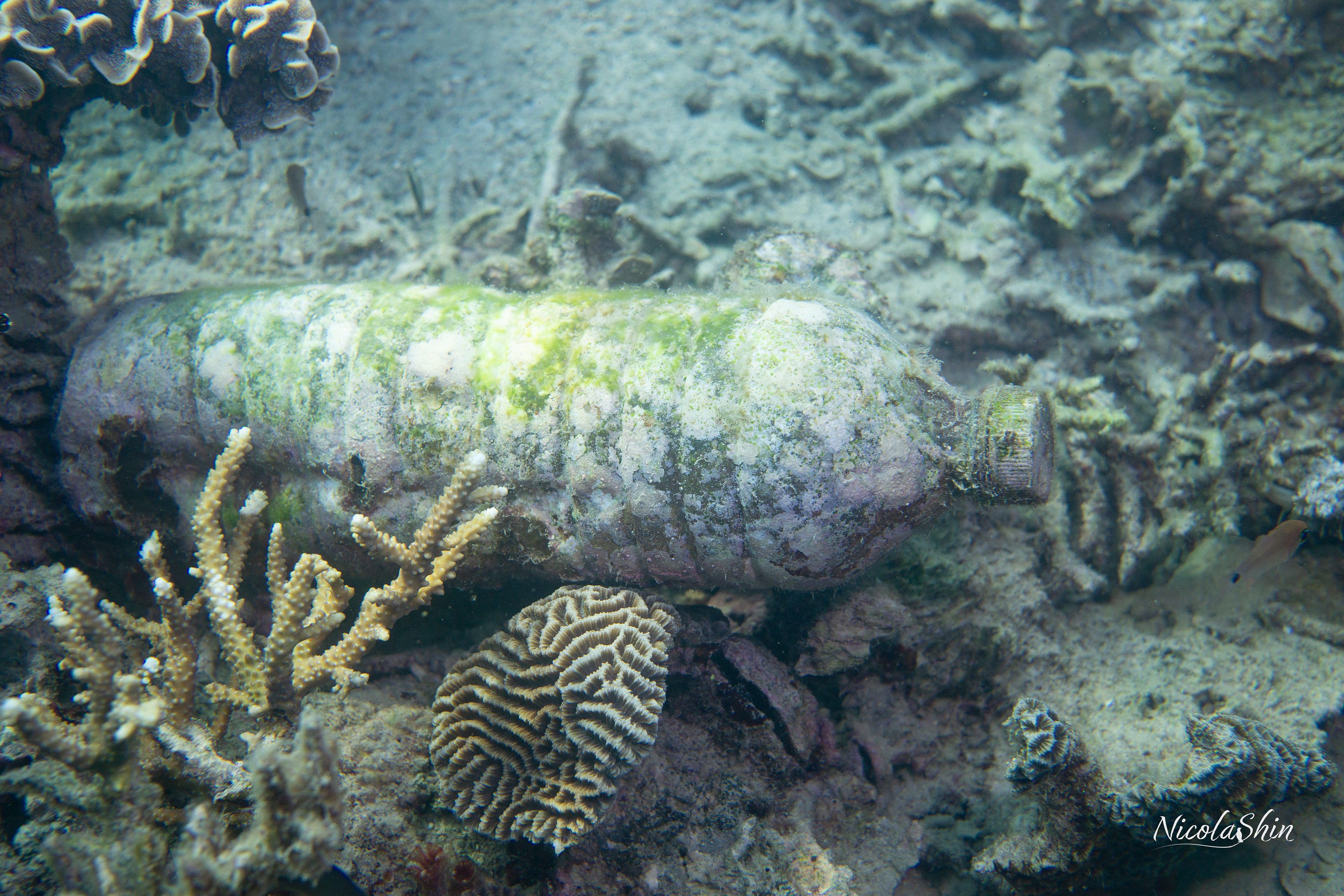
Trash in the coral reef

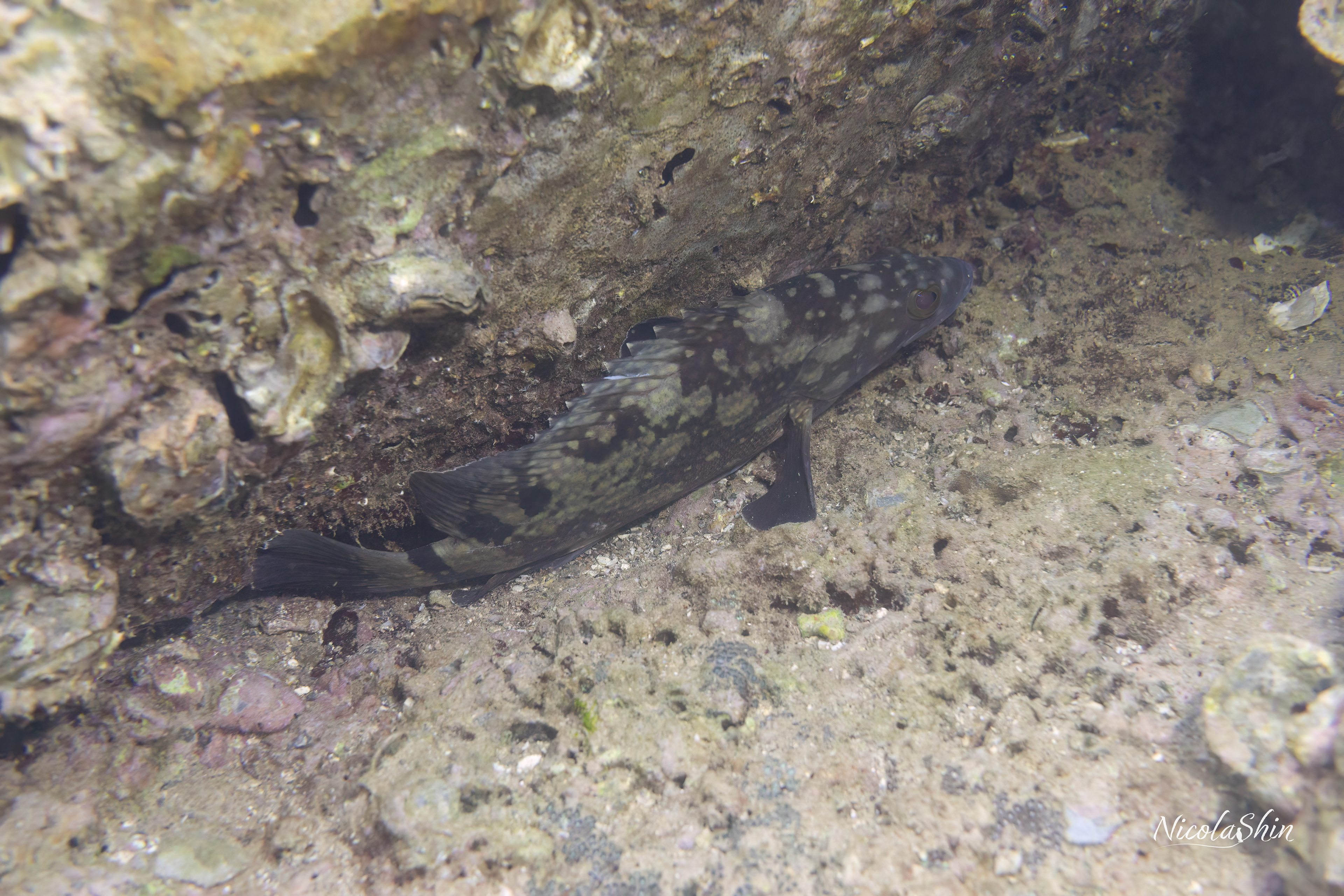

Trash in the coral reef
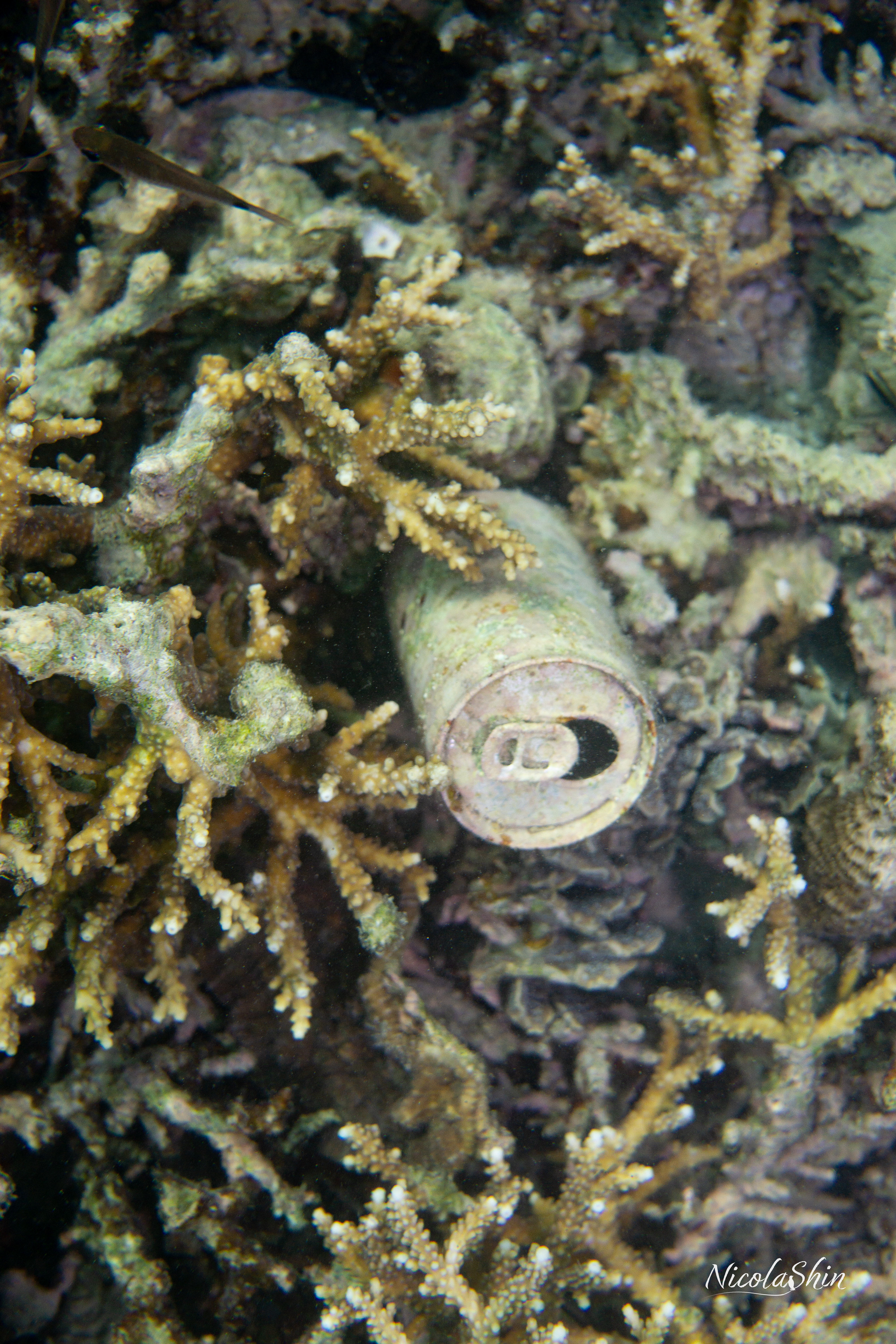
Trash in the coral reef

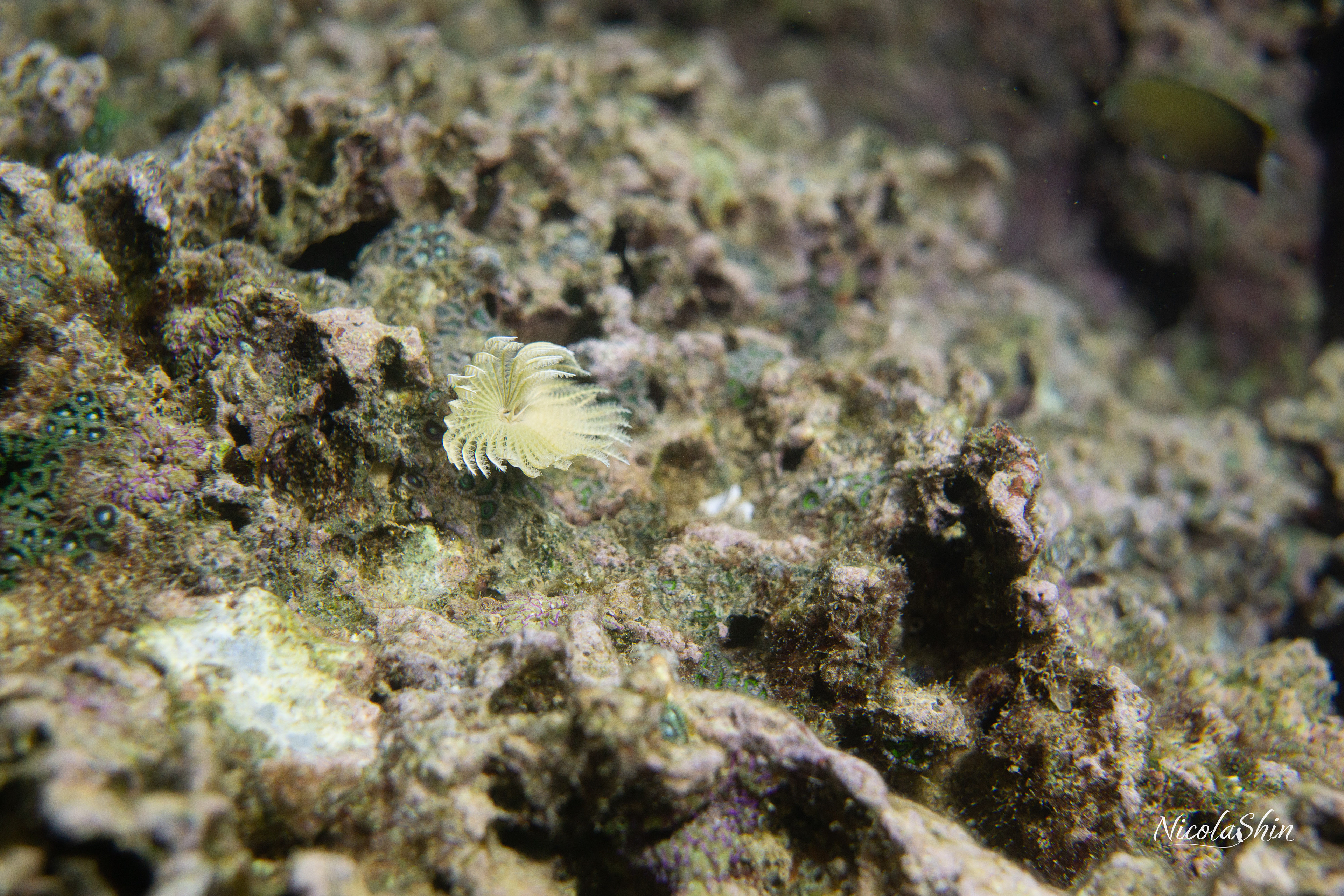

Starfish
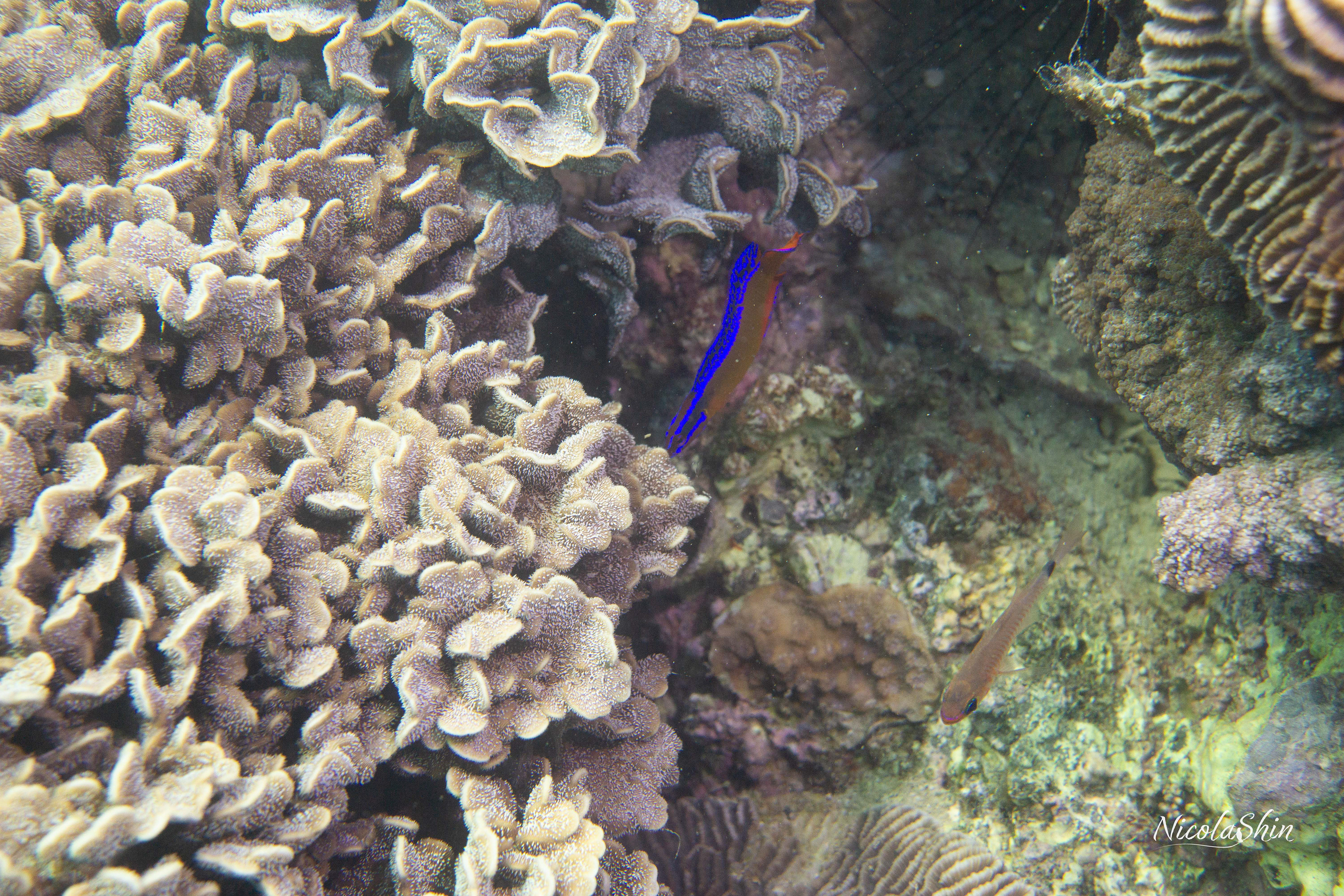
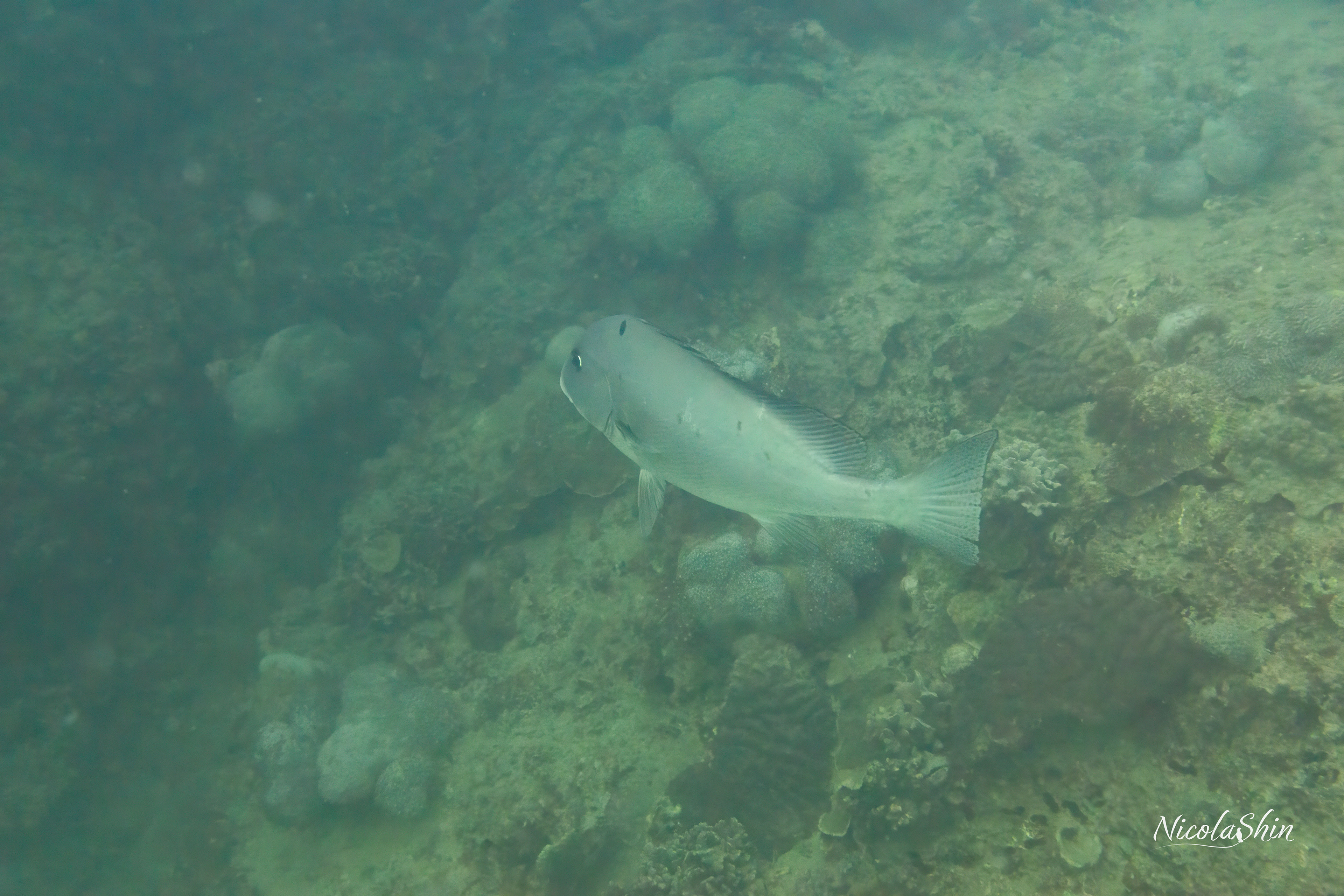
Trevally
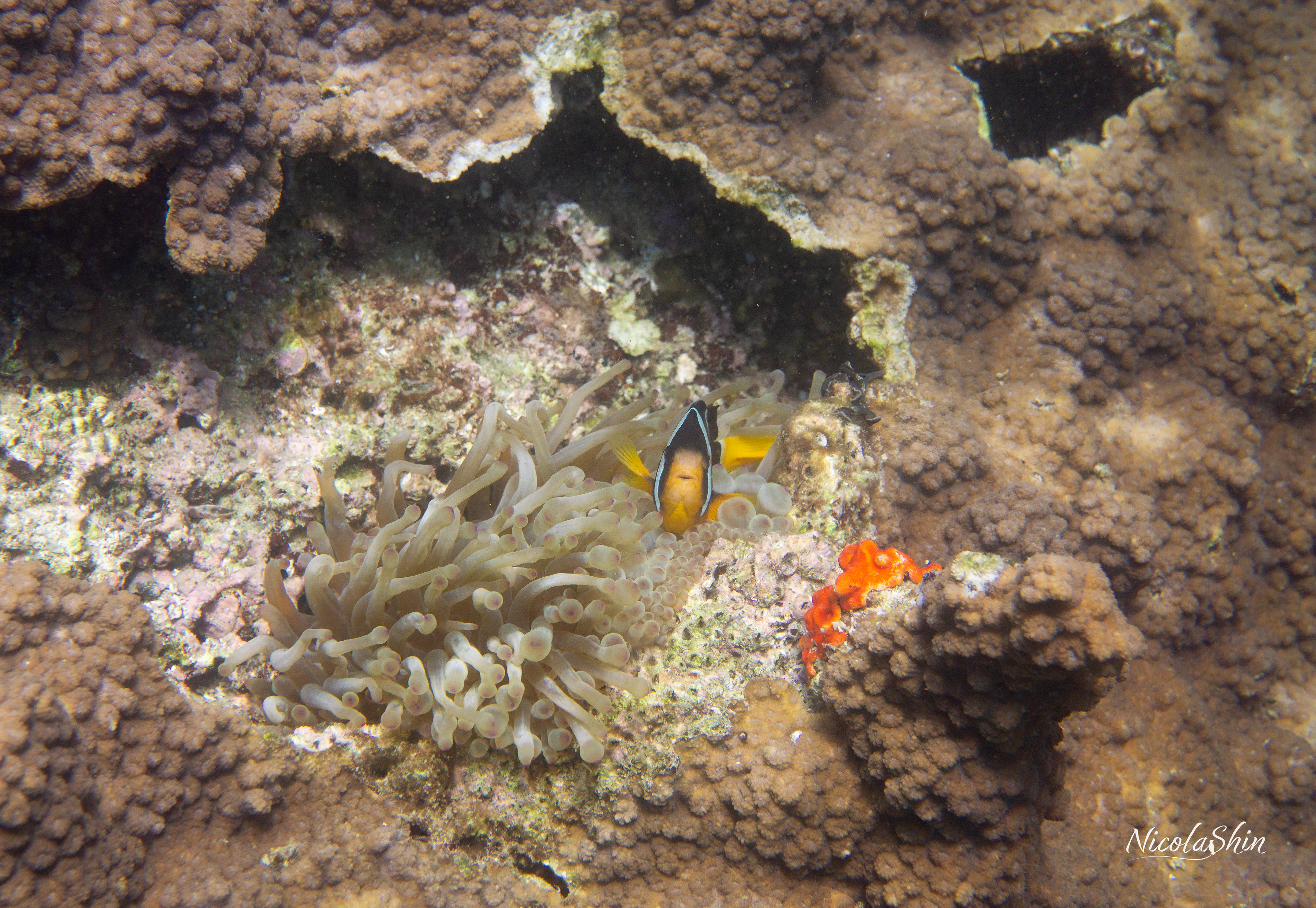
Clownfish
